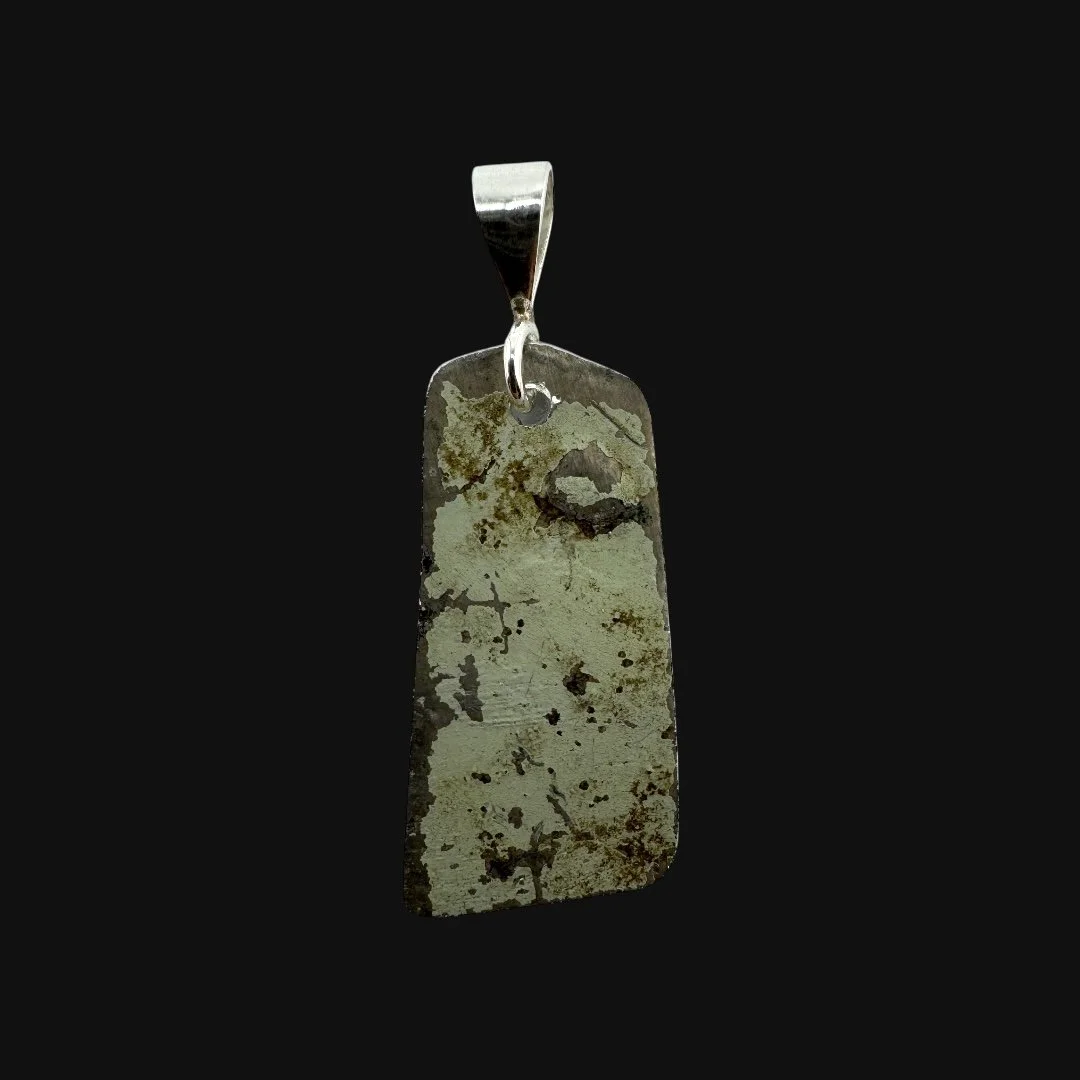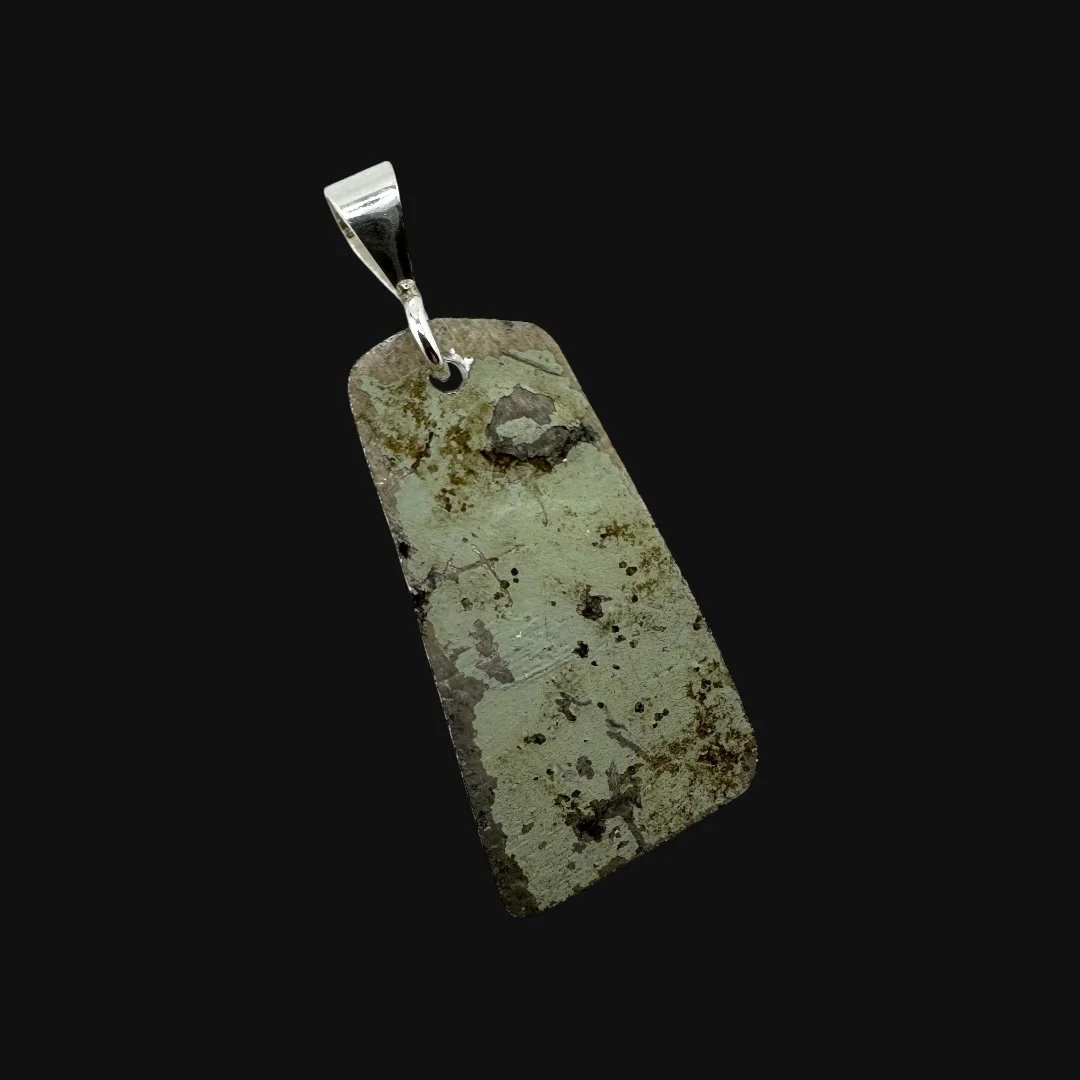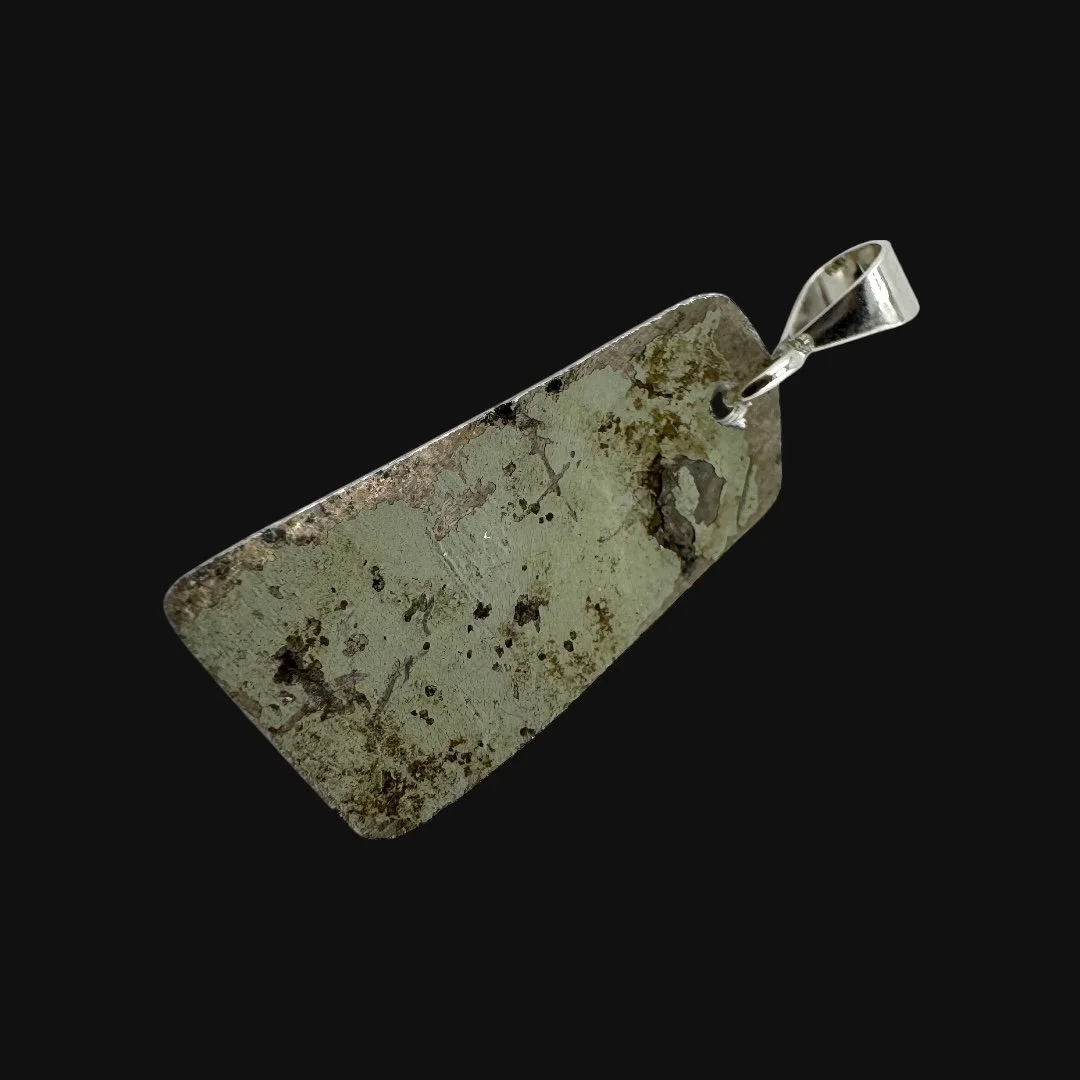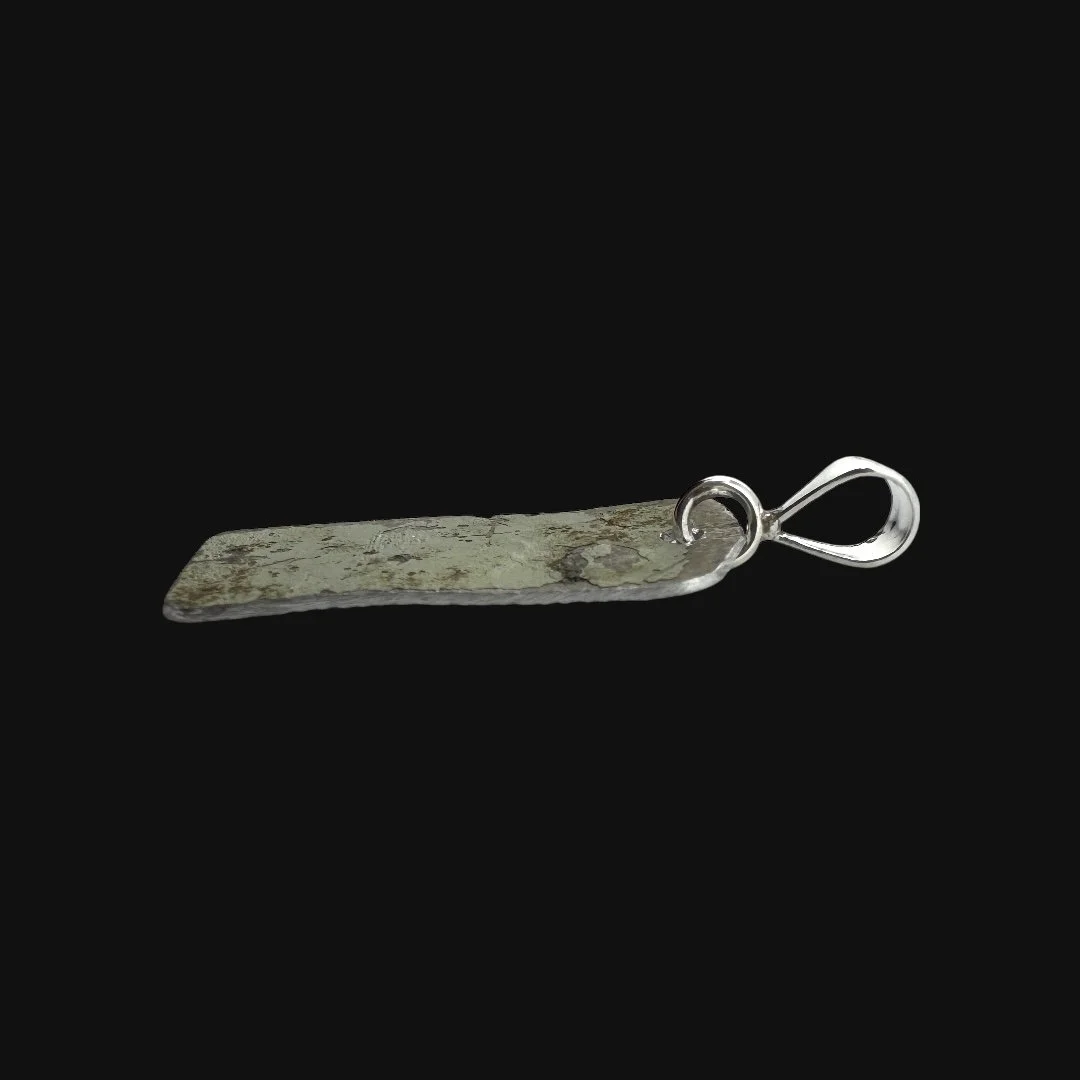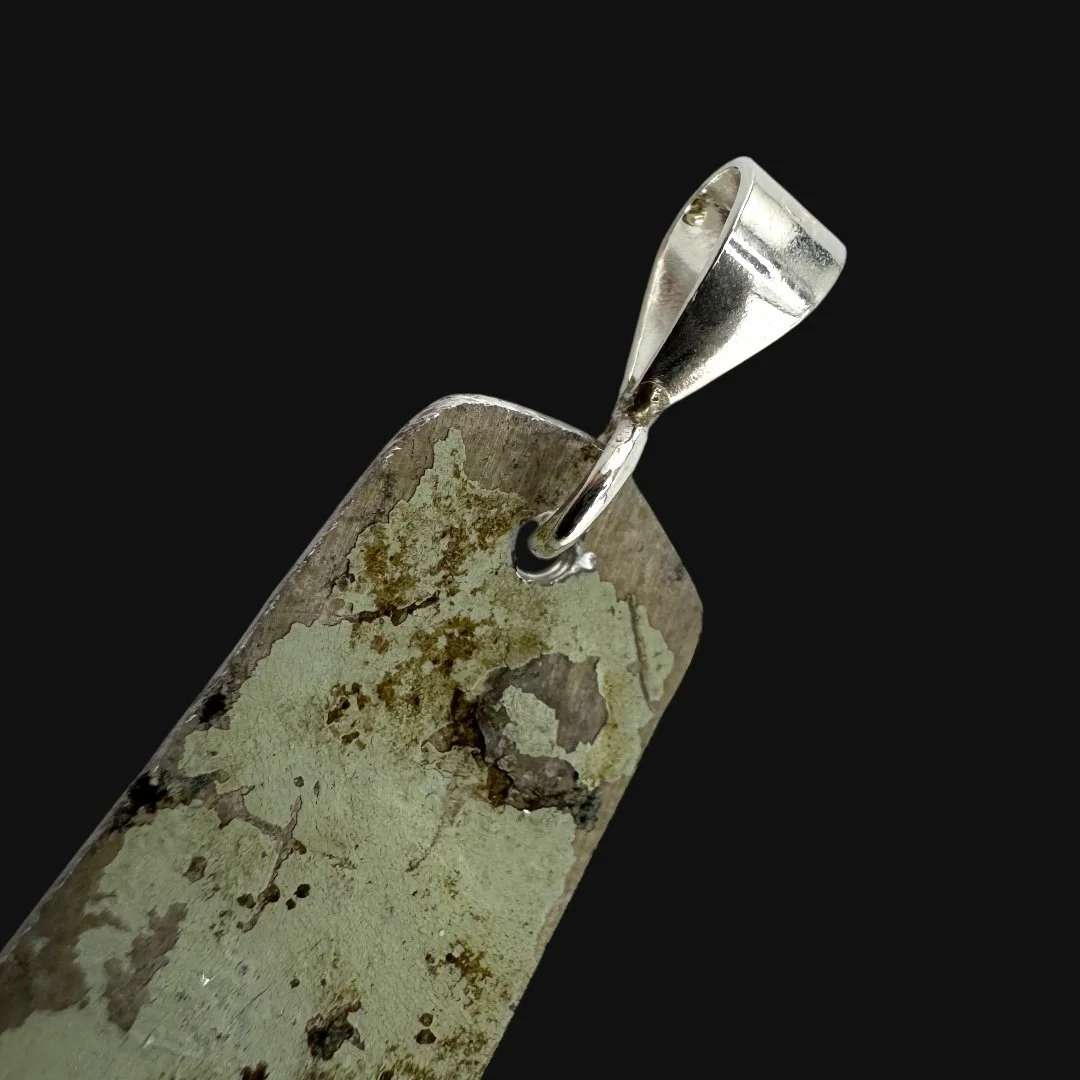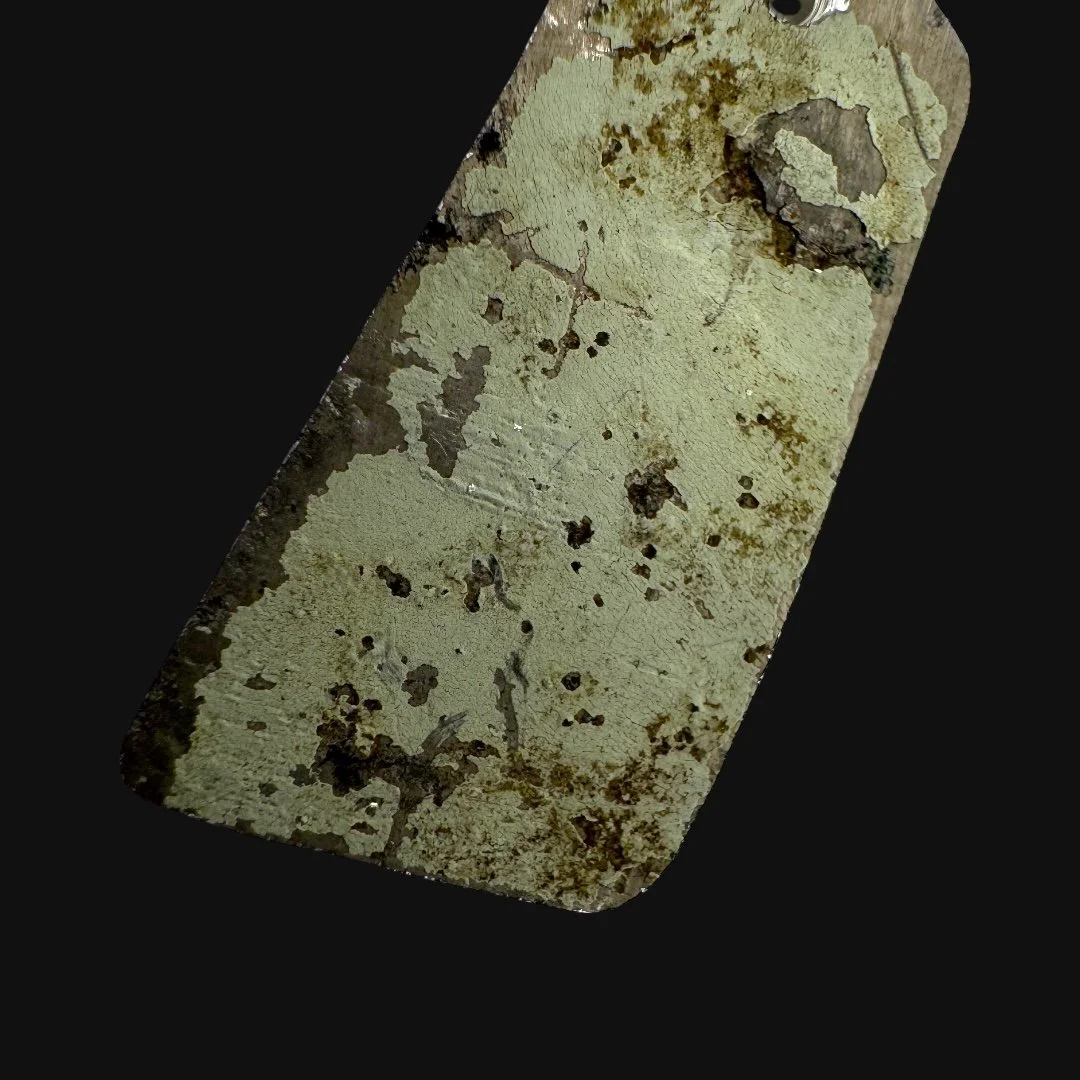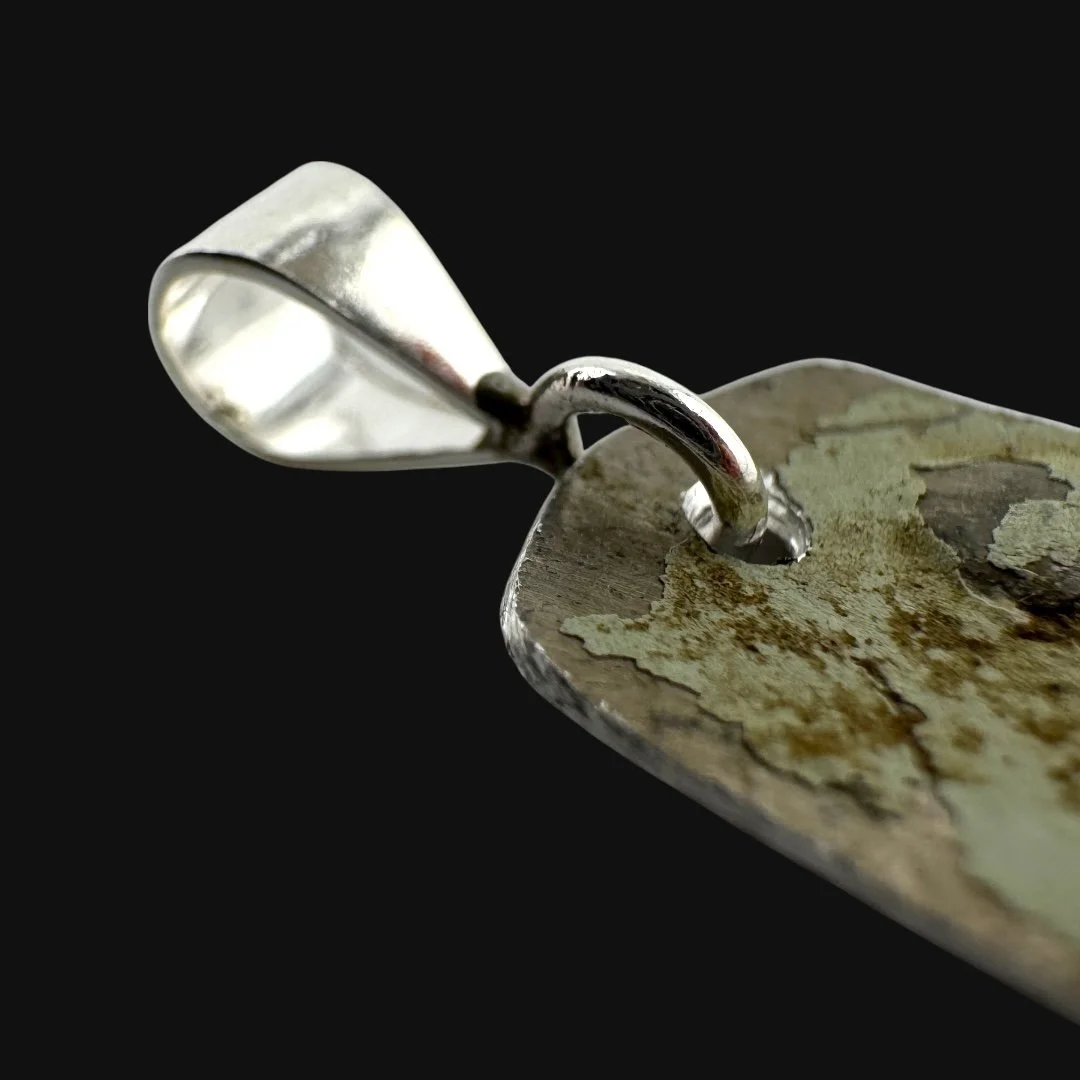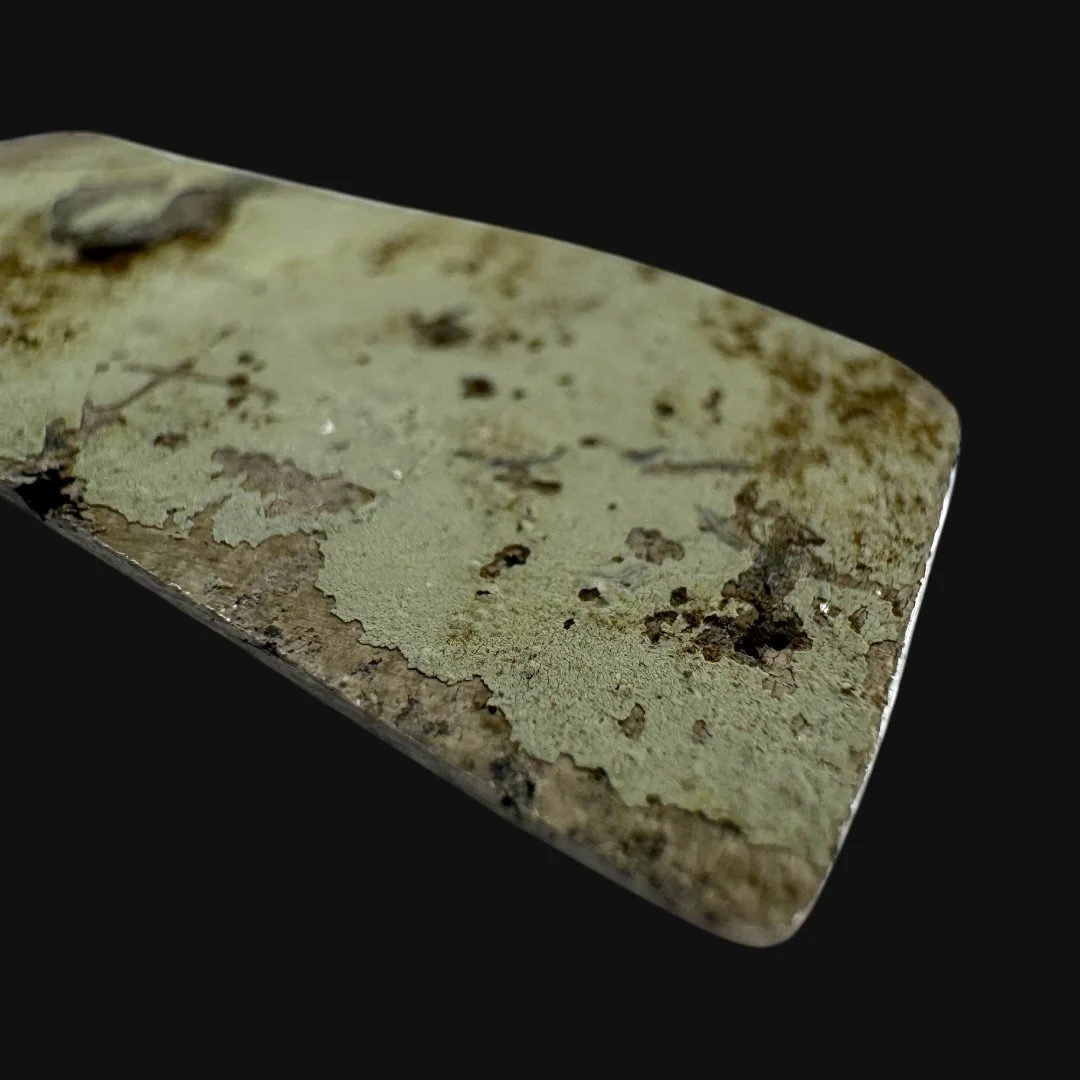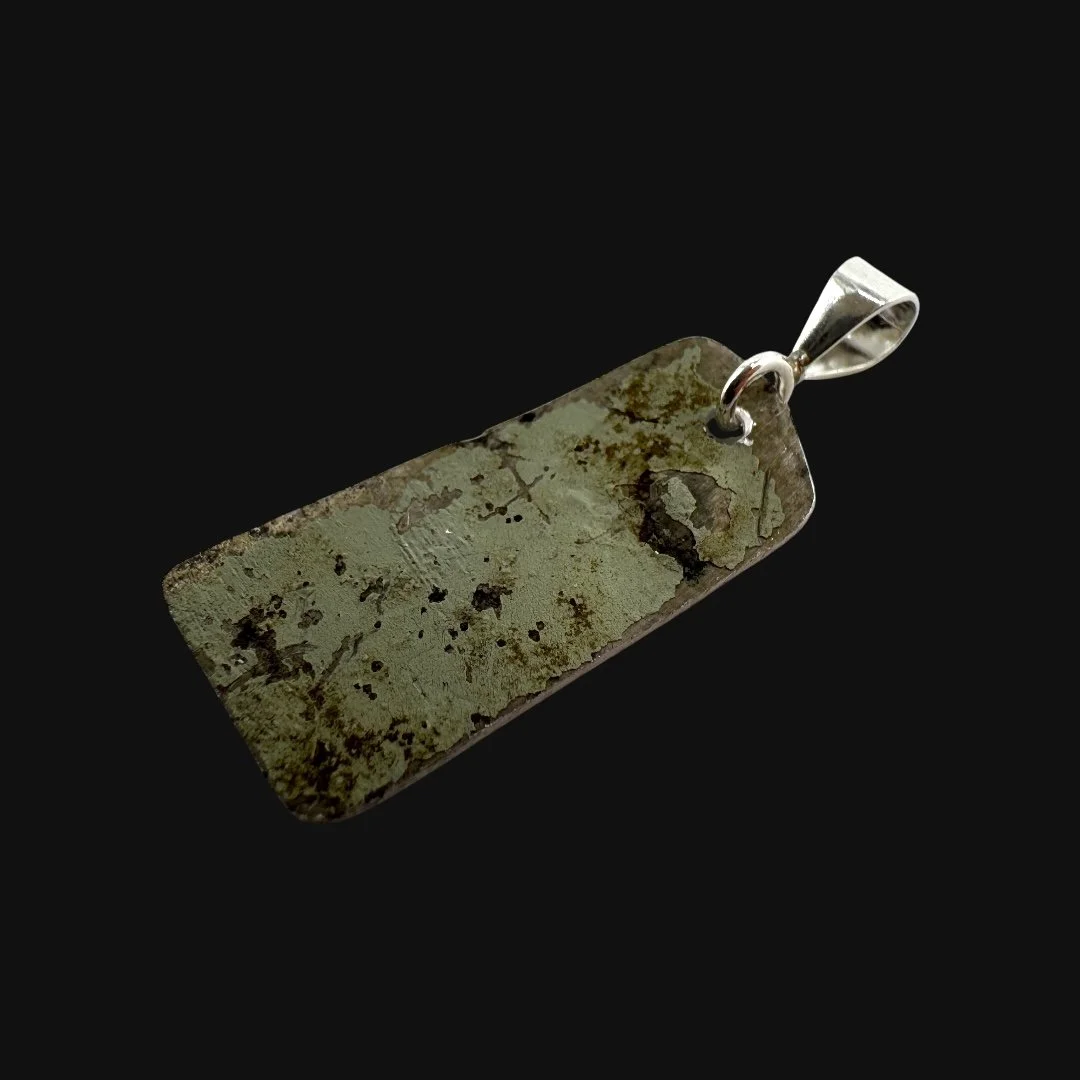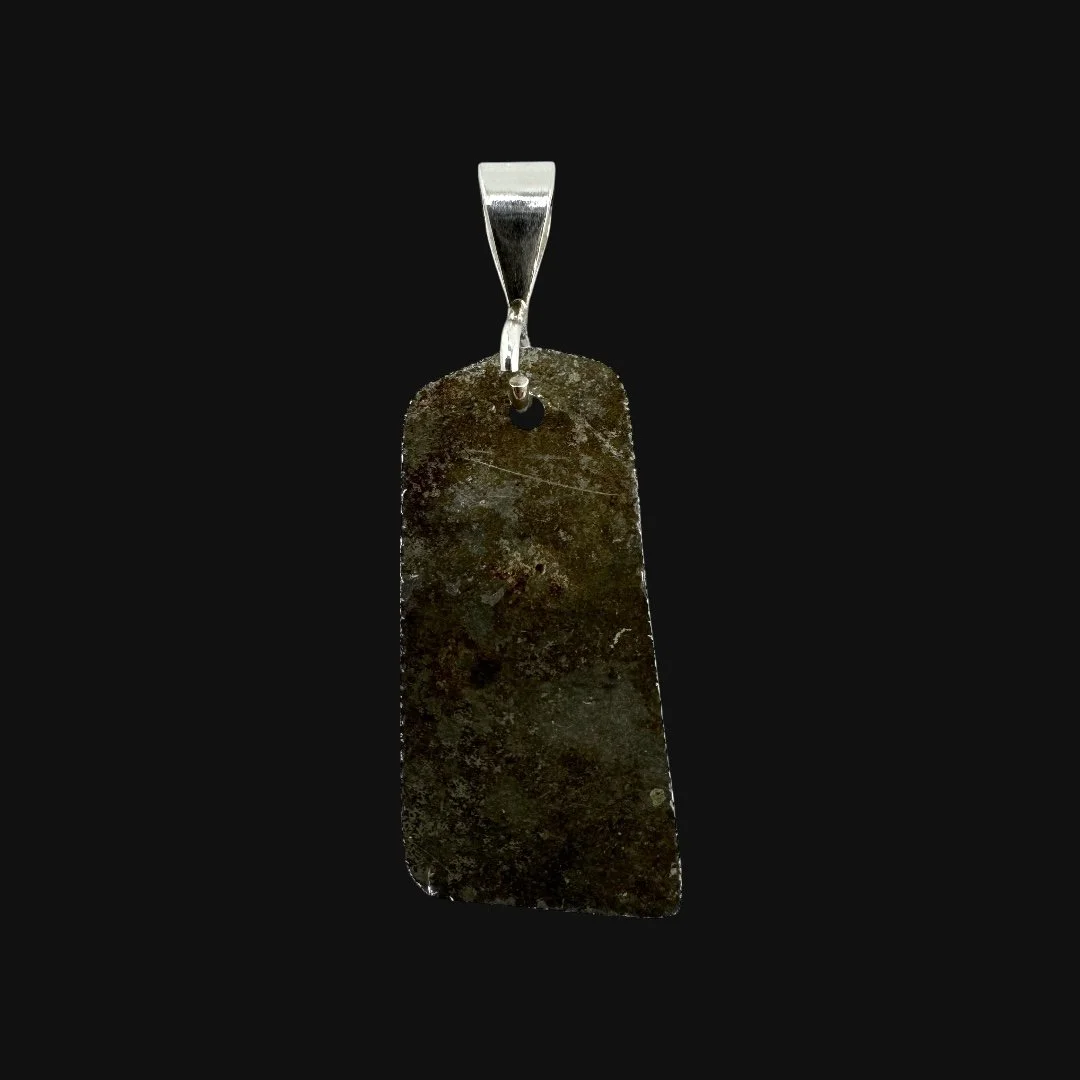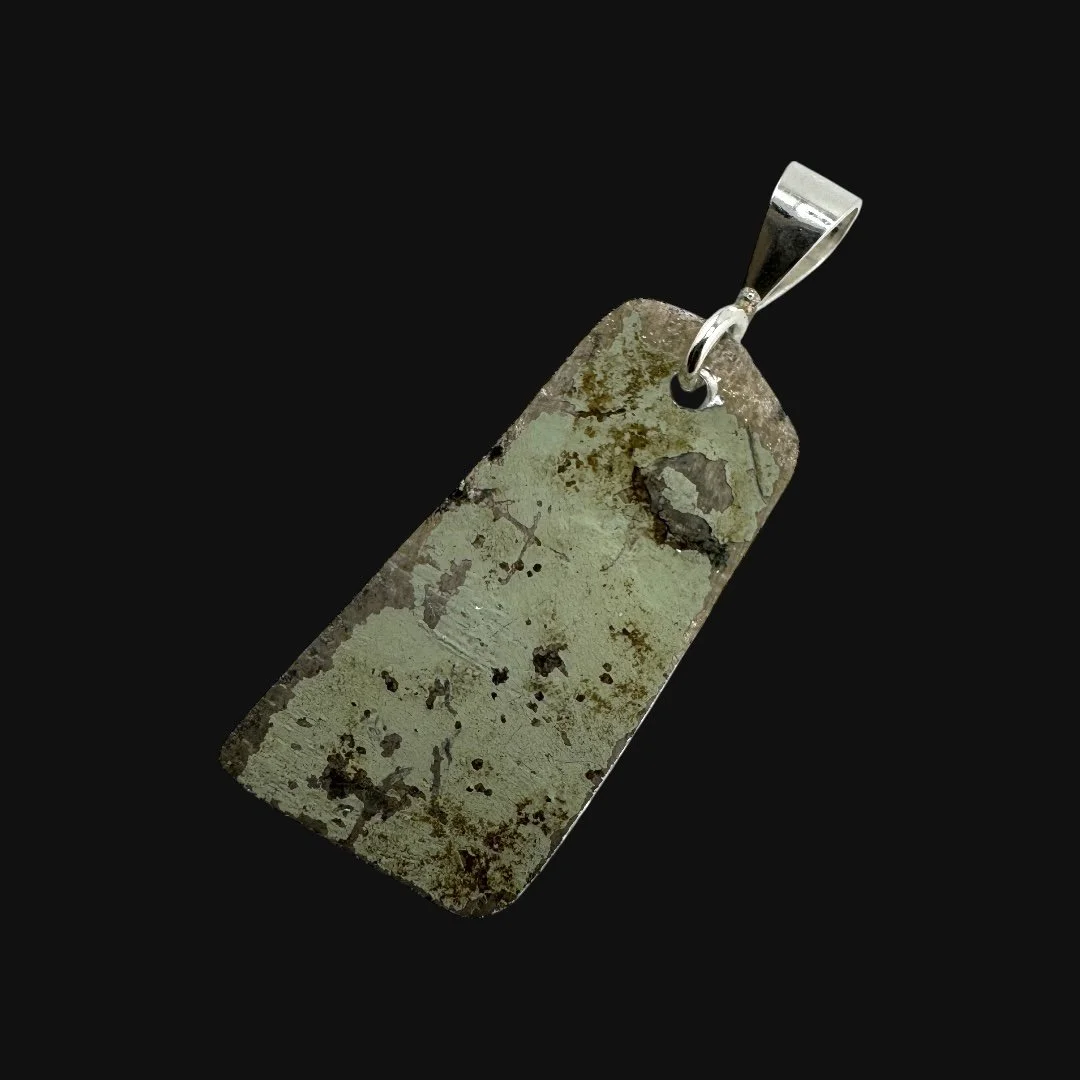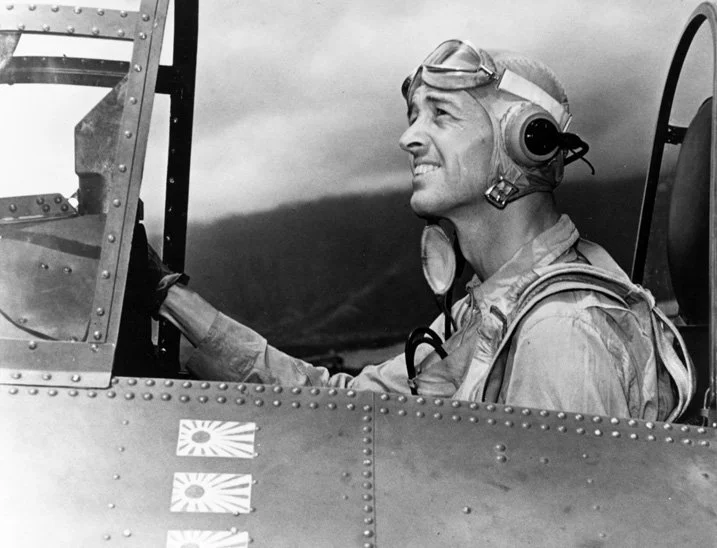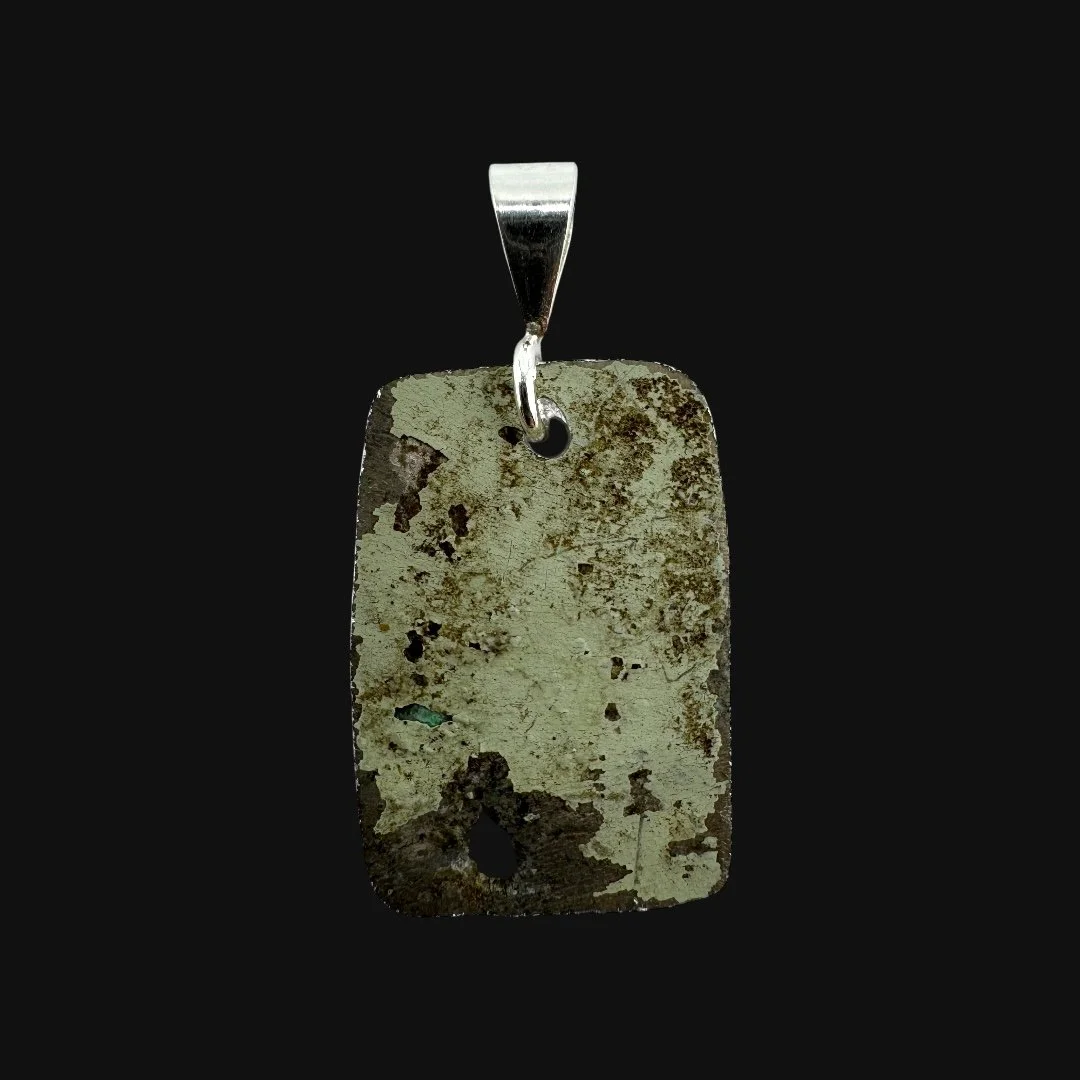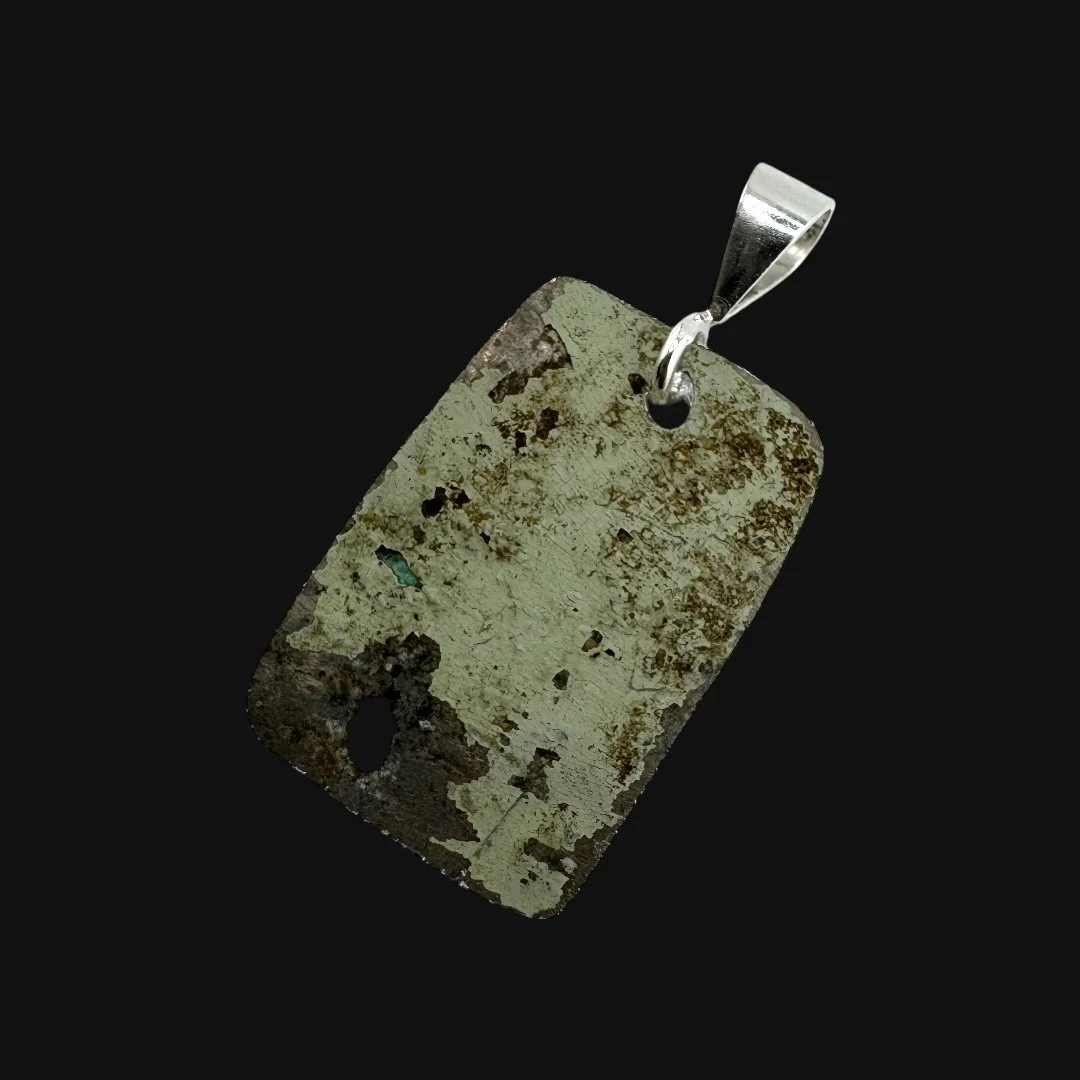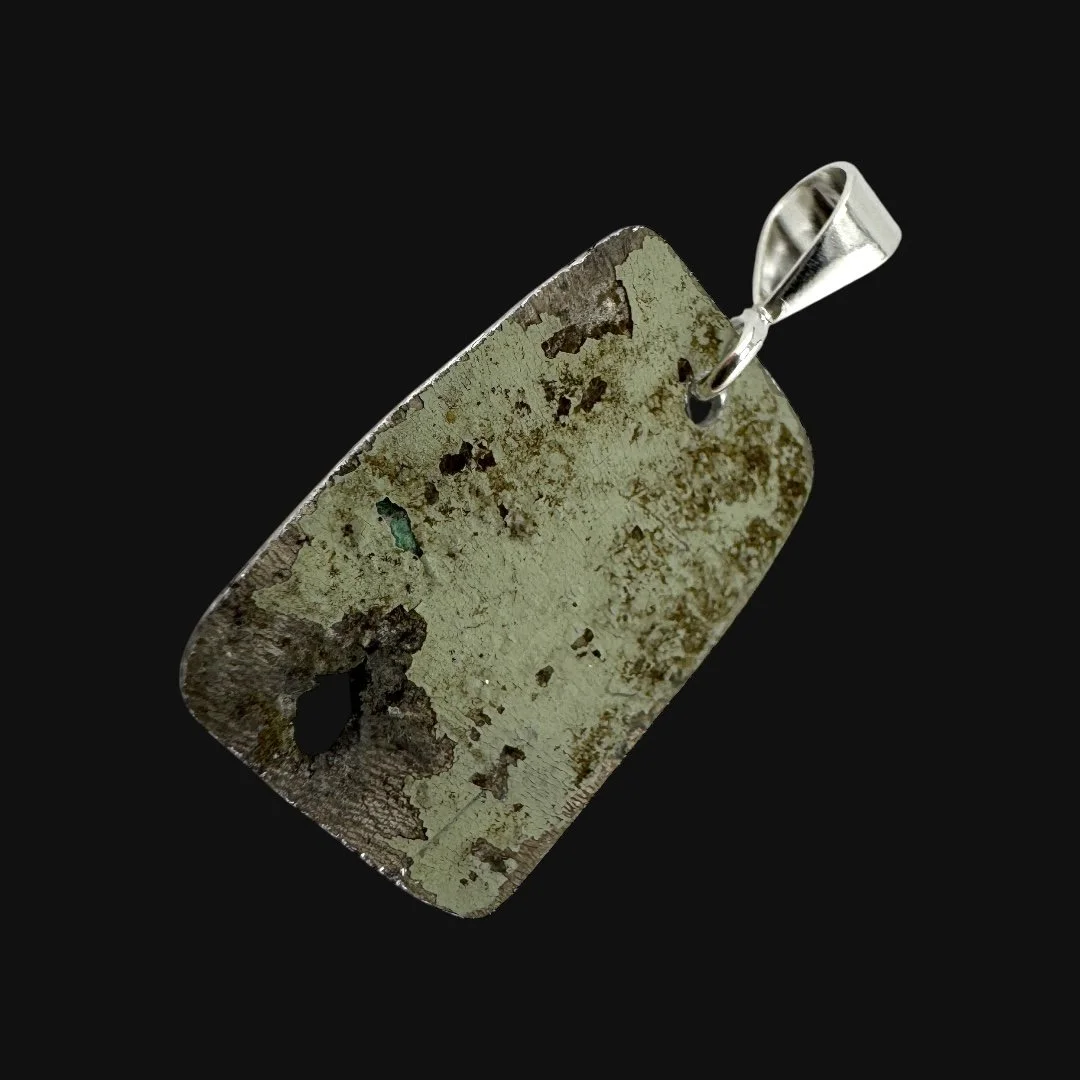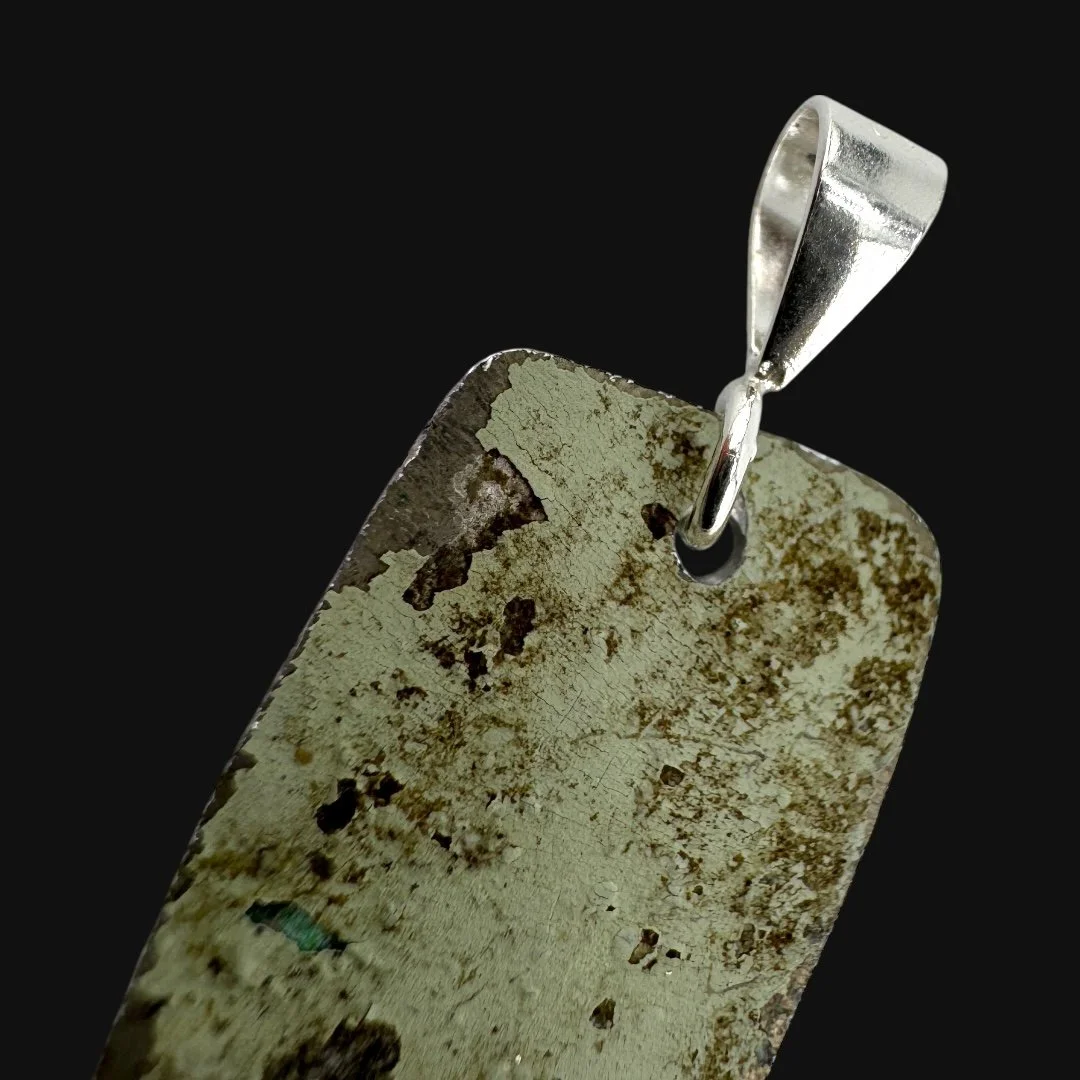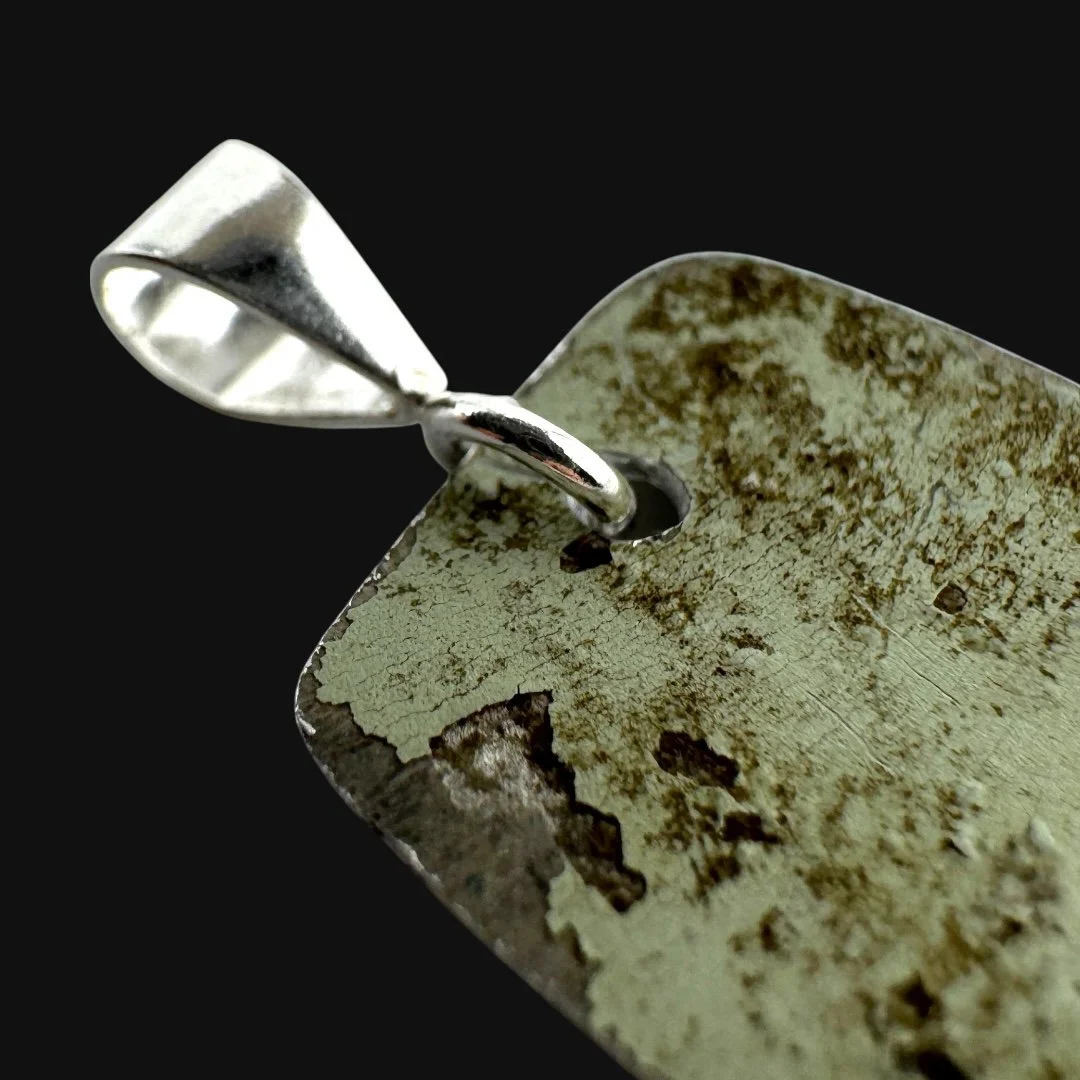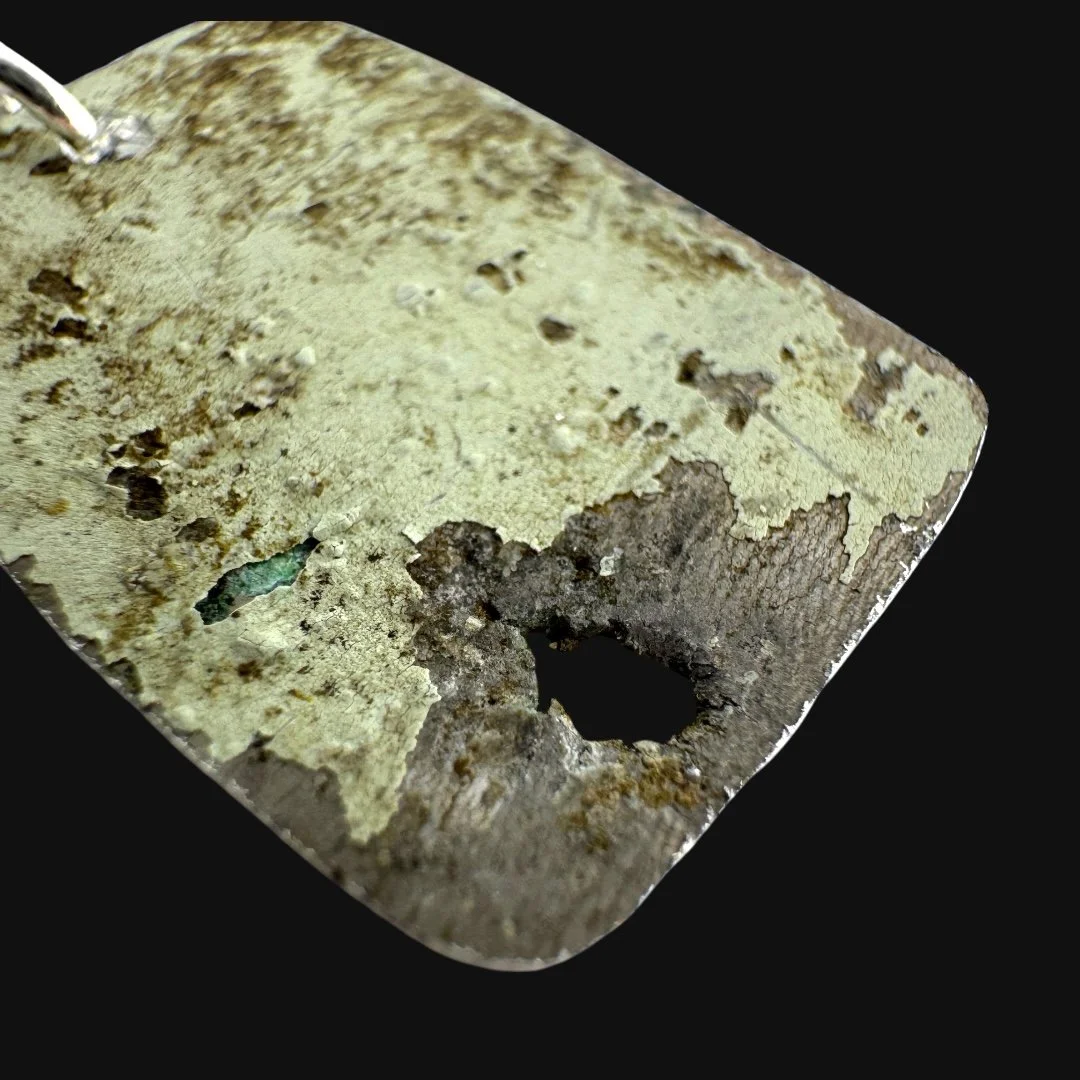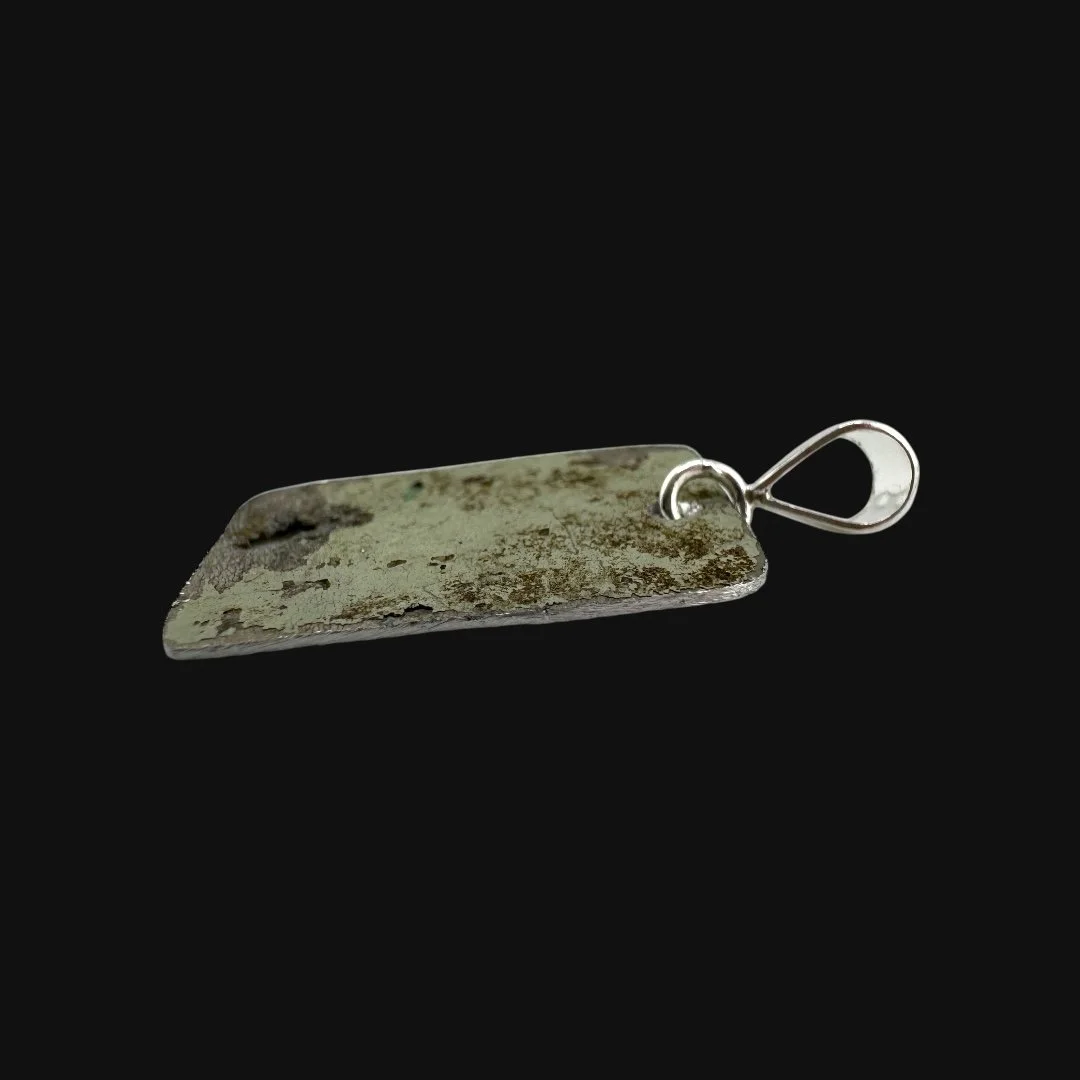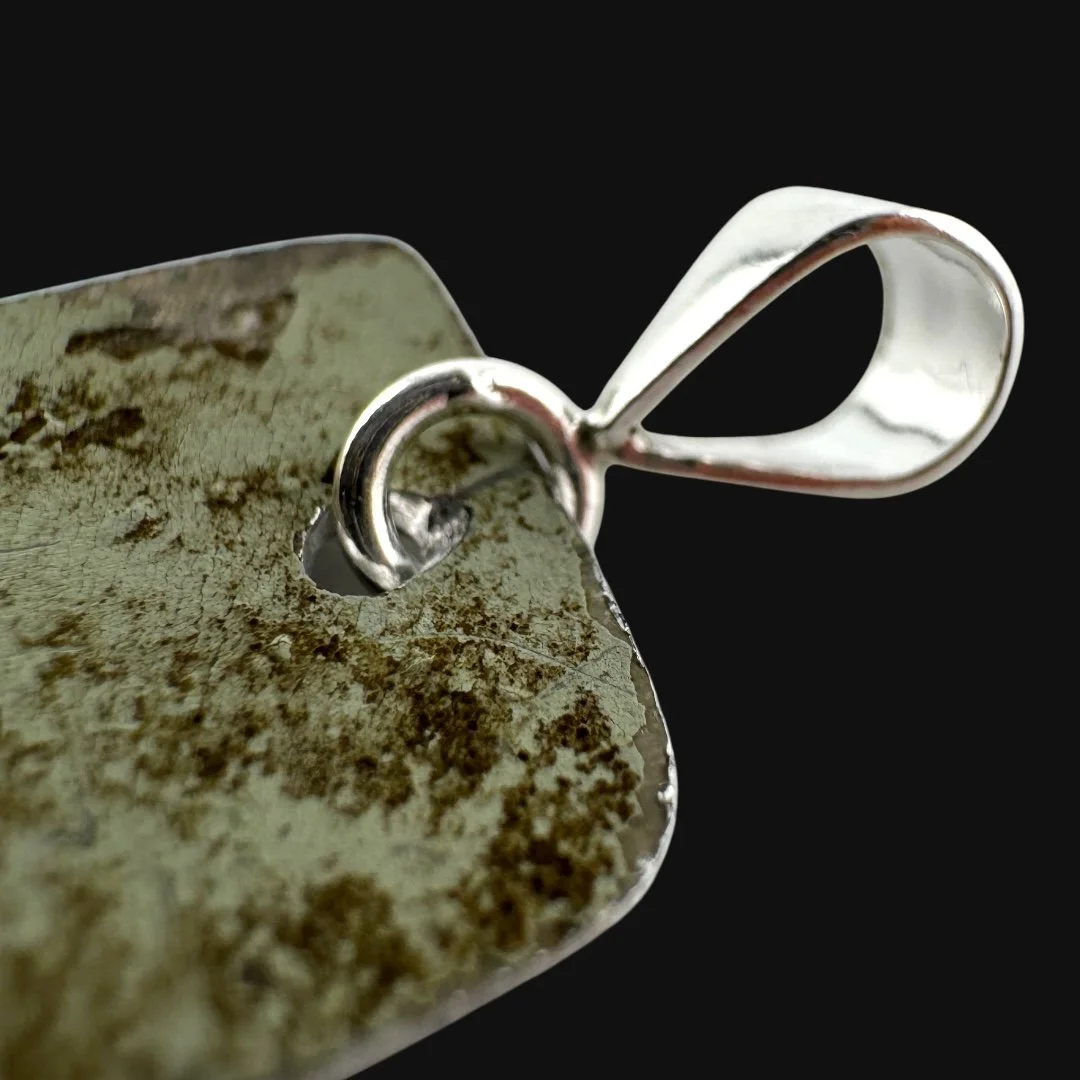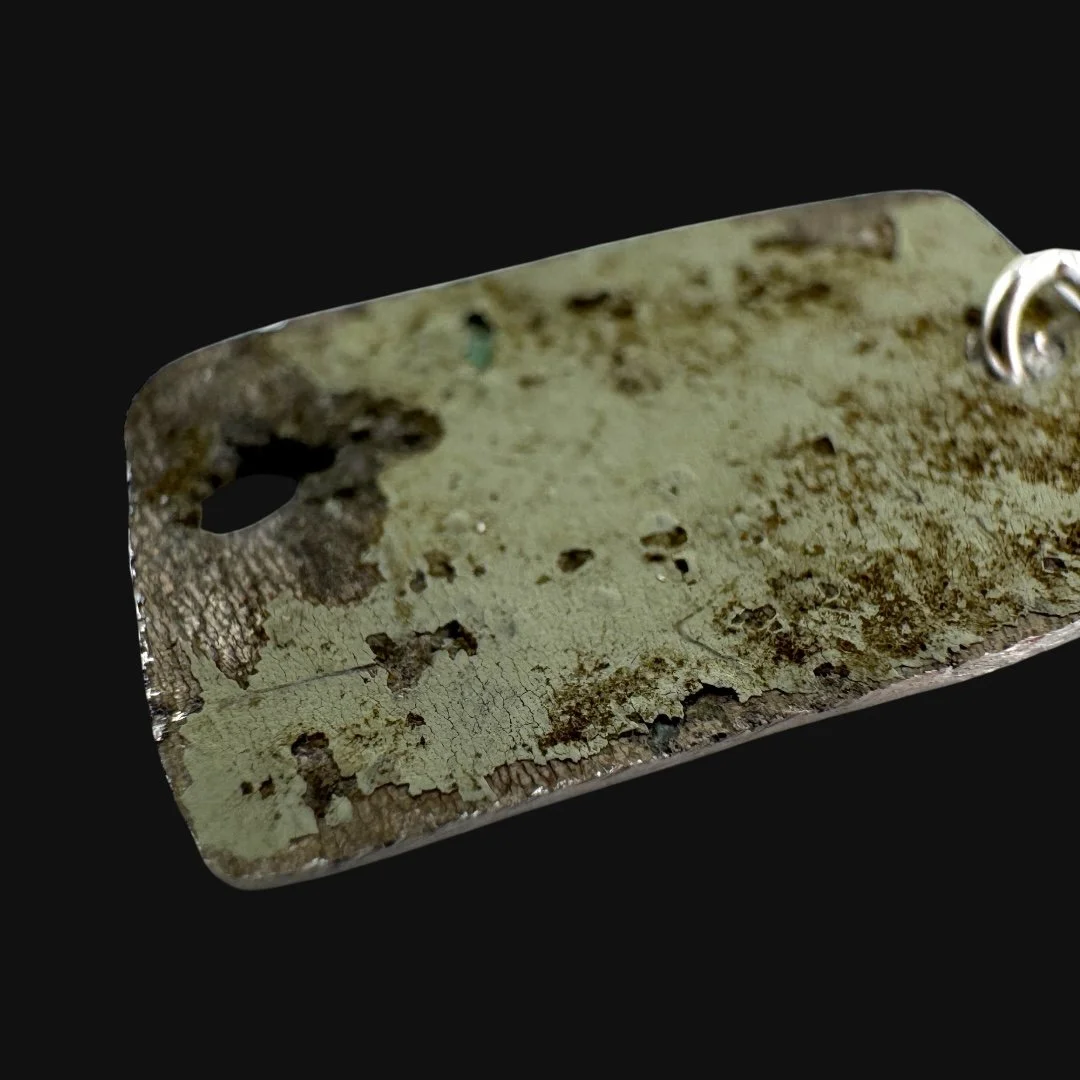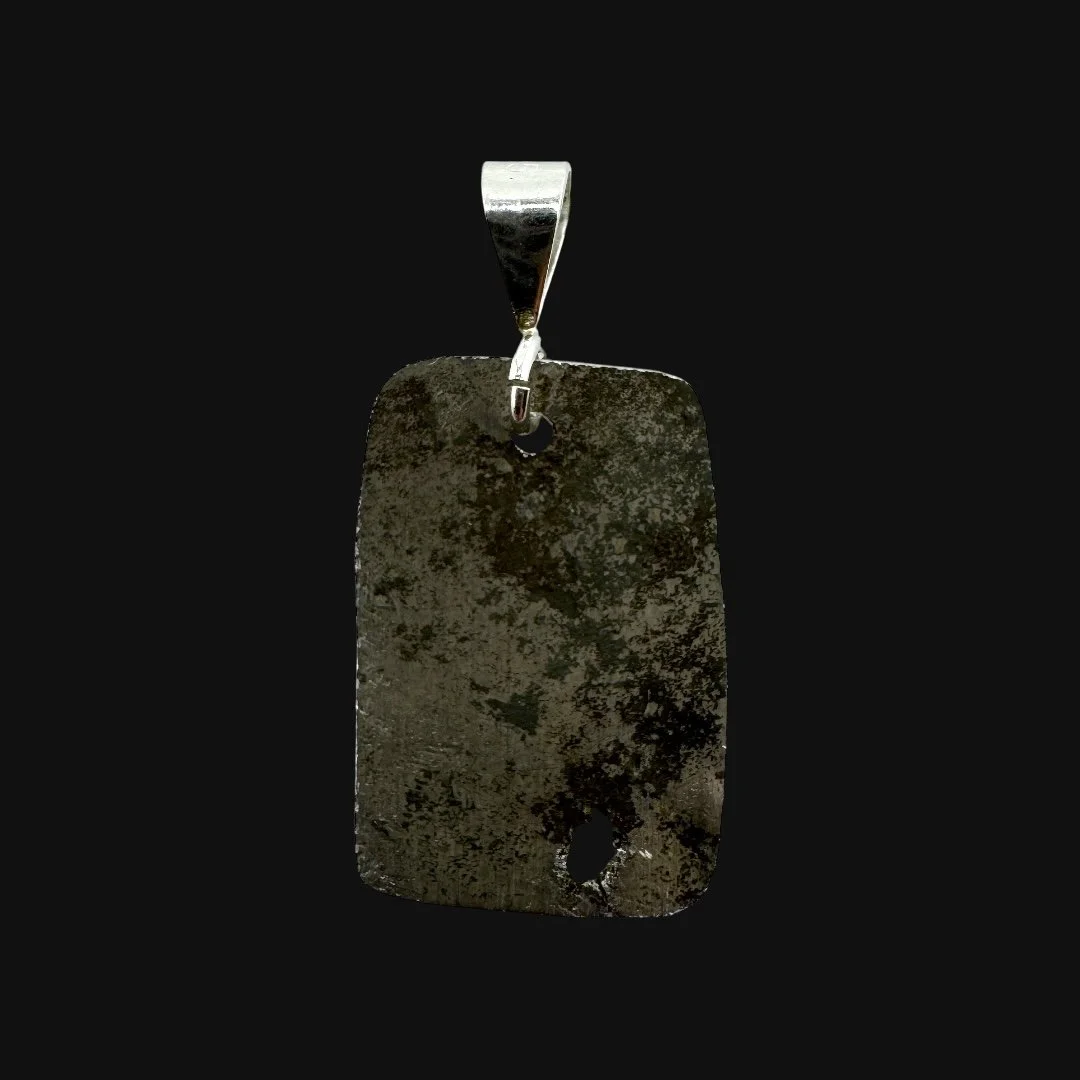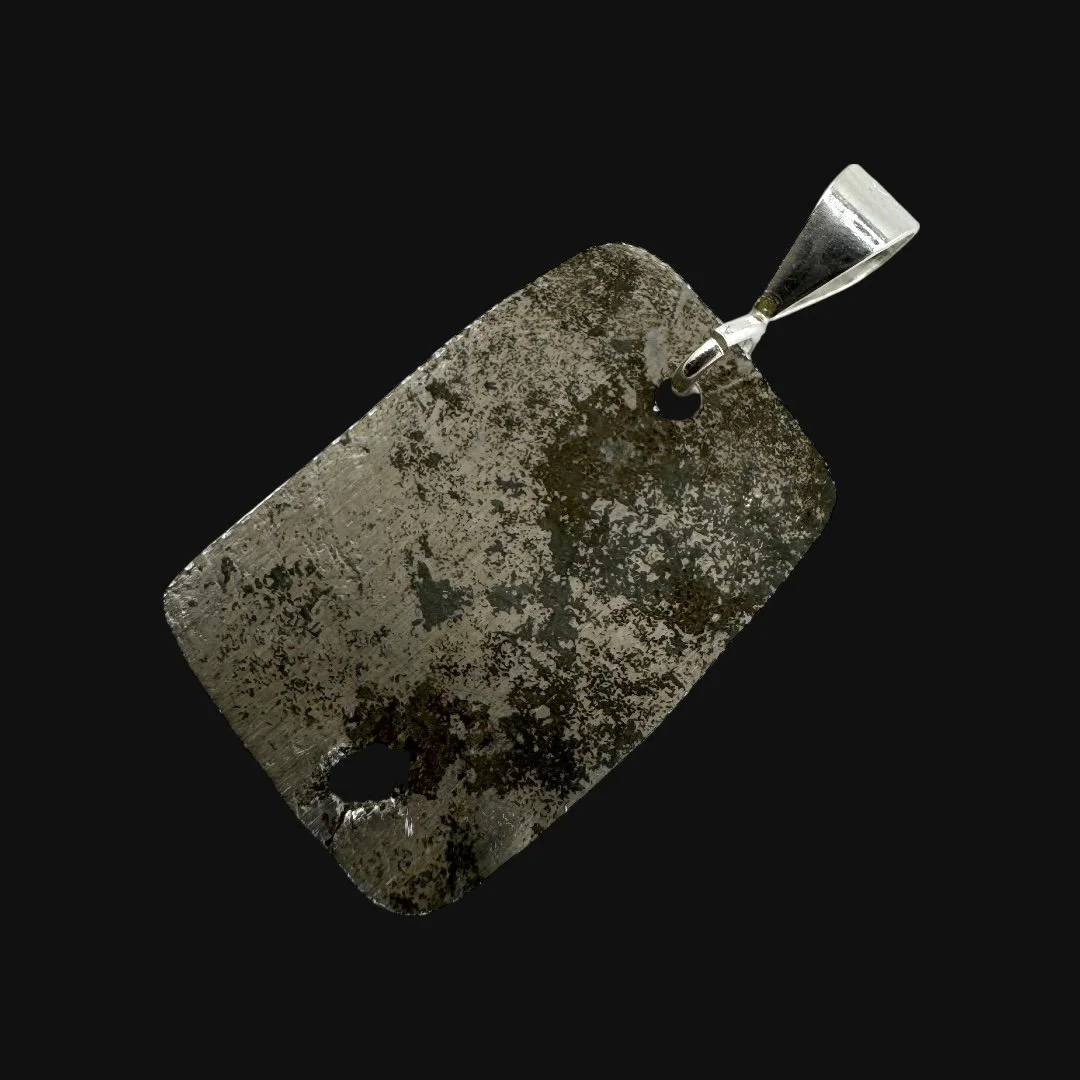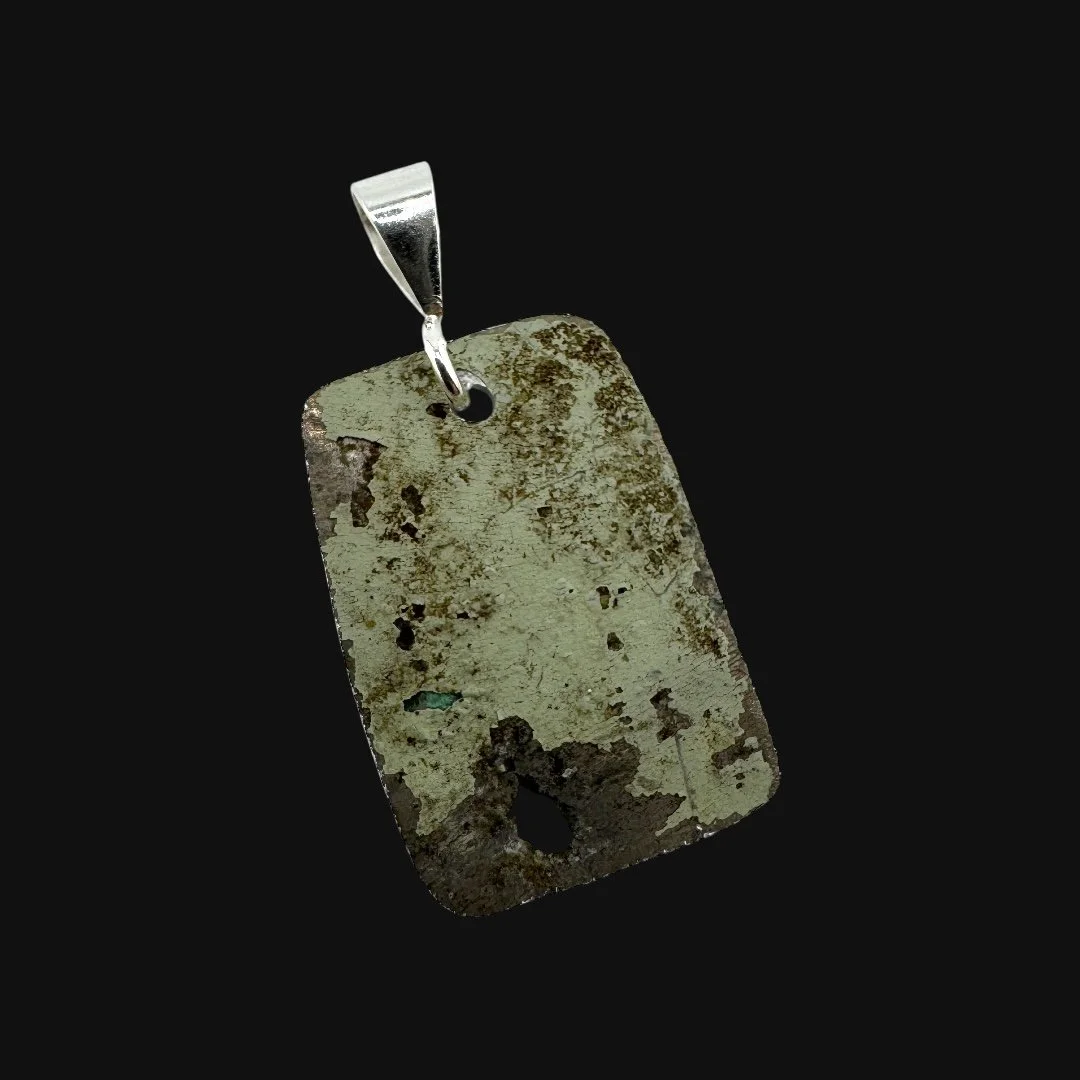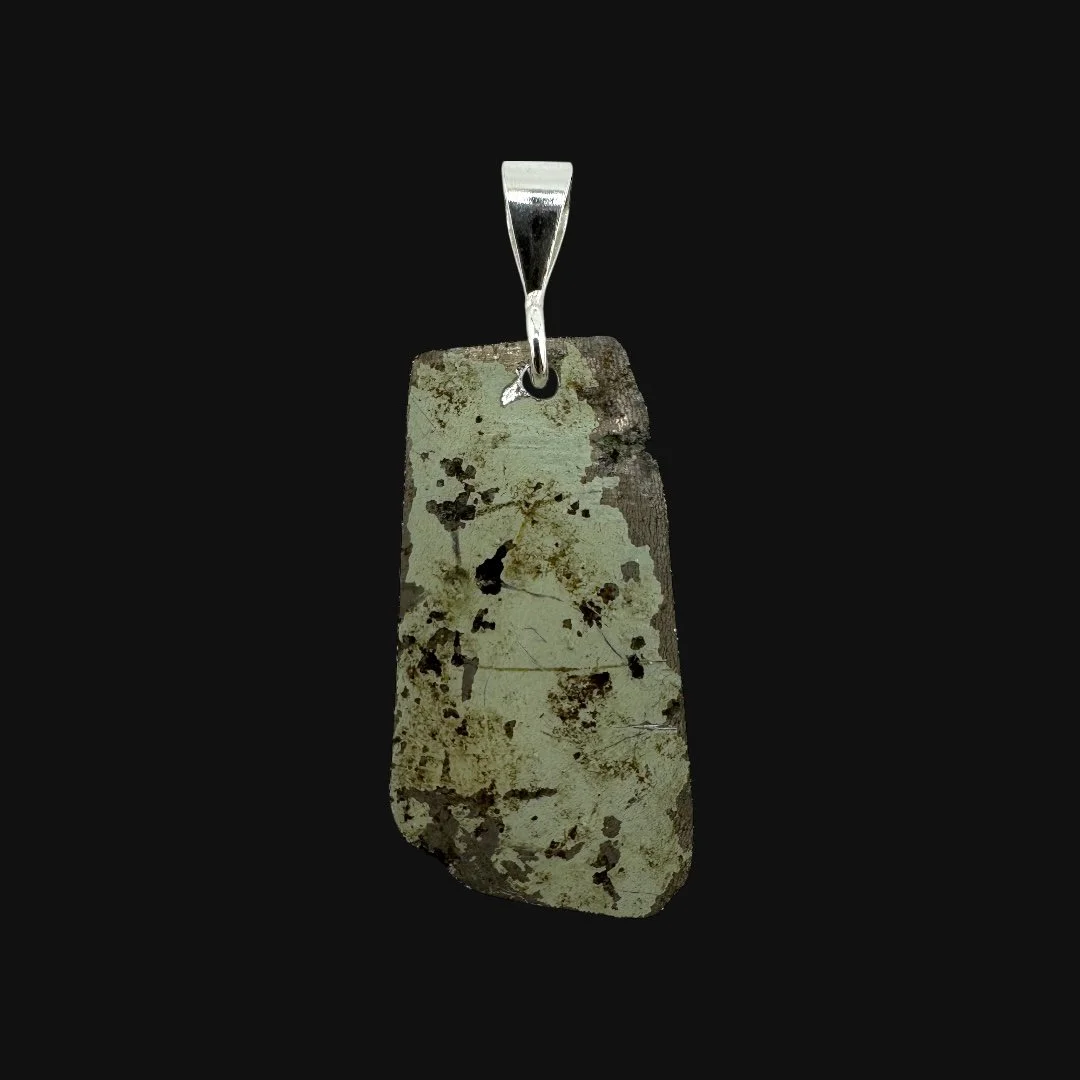 Image 1 of 17
Image 1 of 17

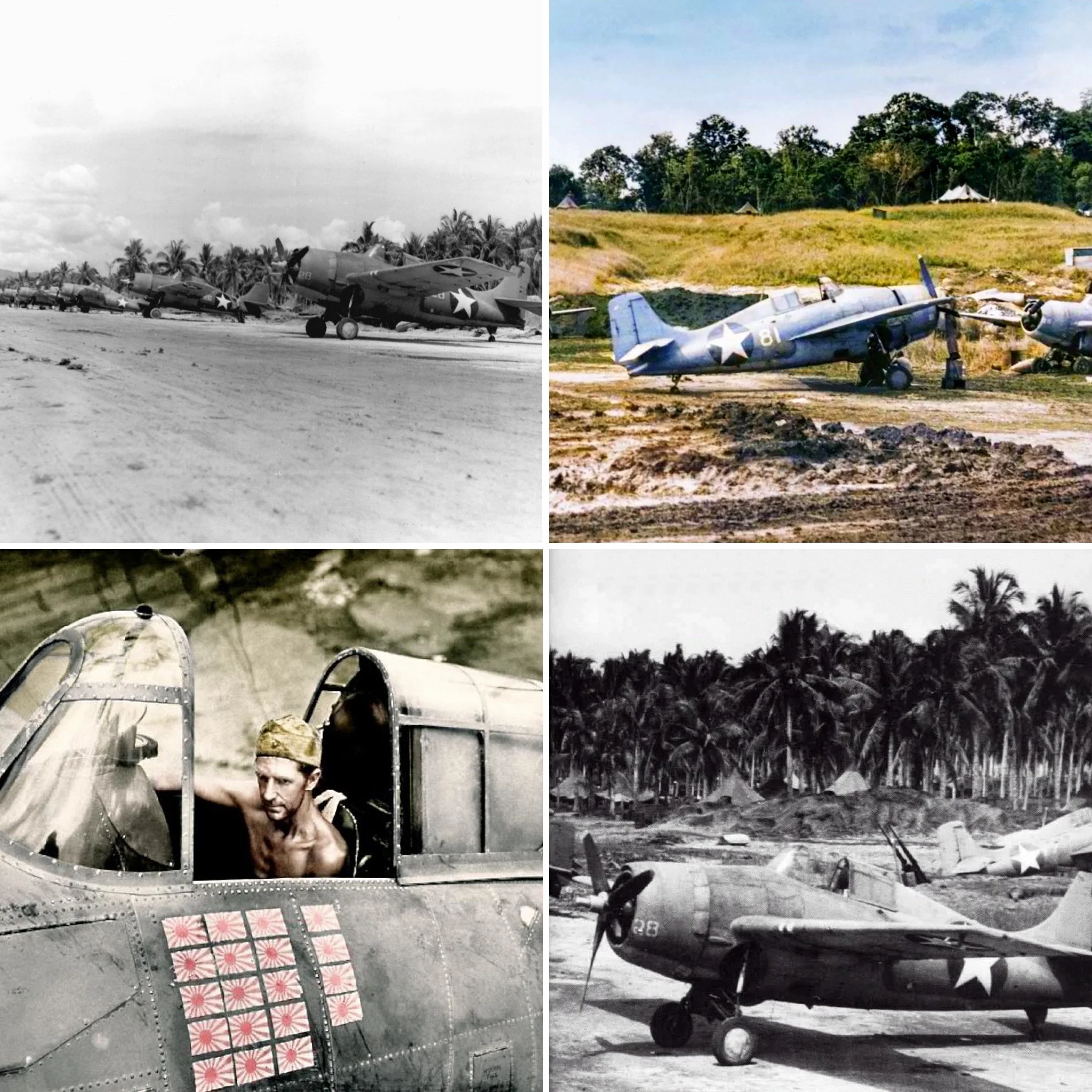 Image 2 of 17
Image 2 of 17

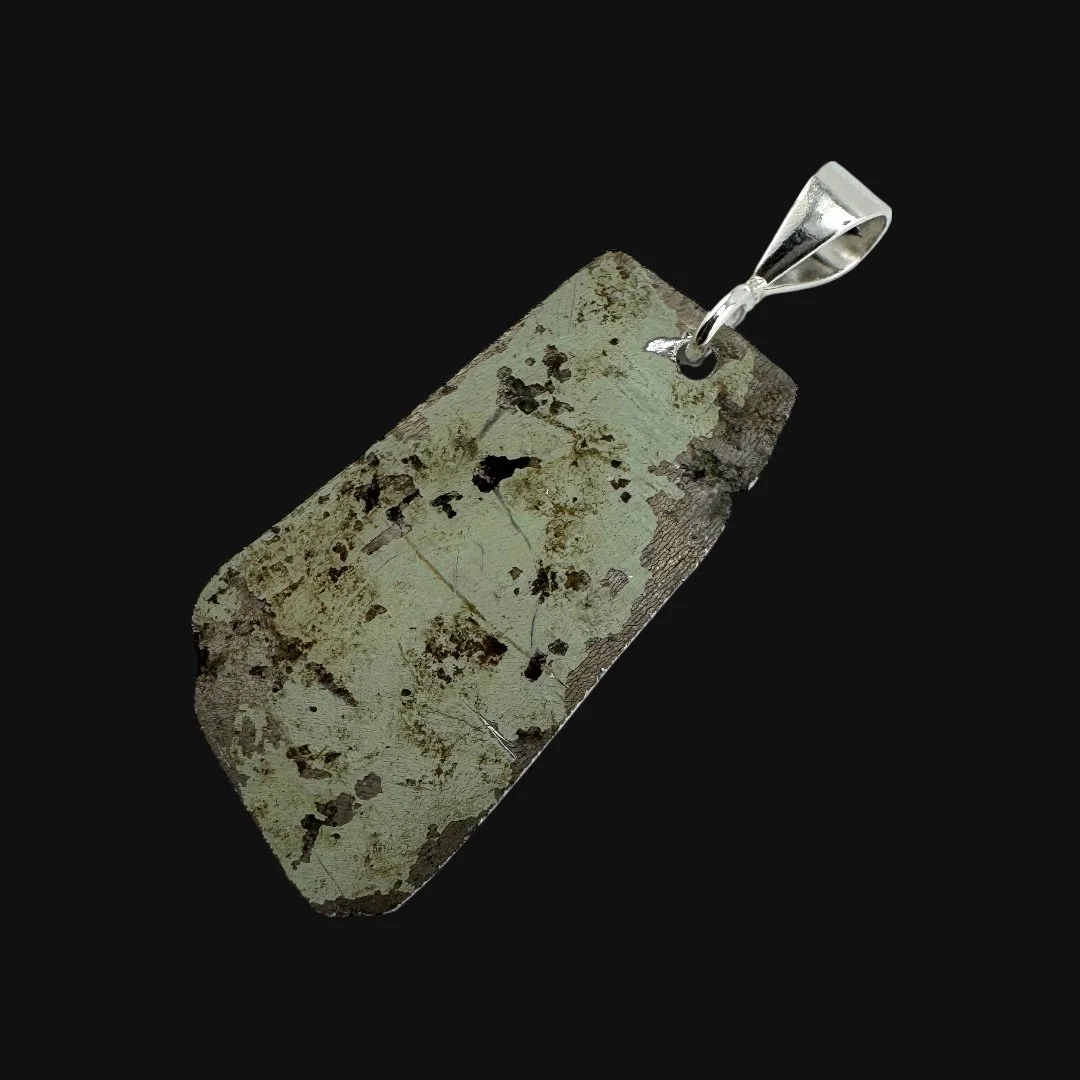 Image 3 of 17
Image 3 of 17

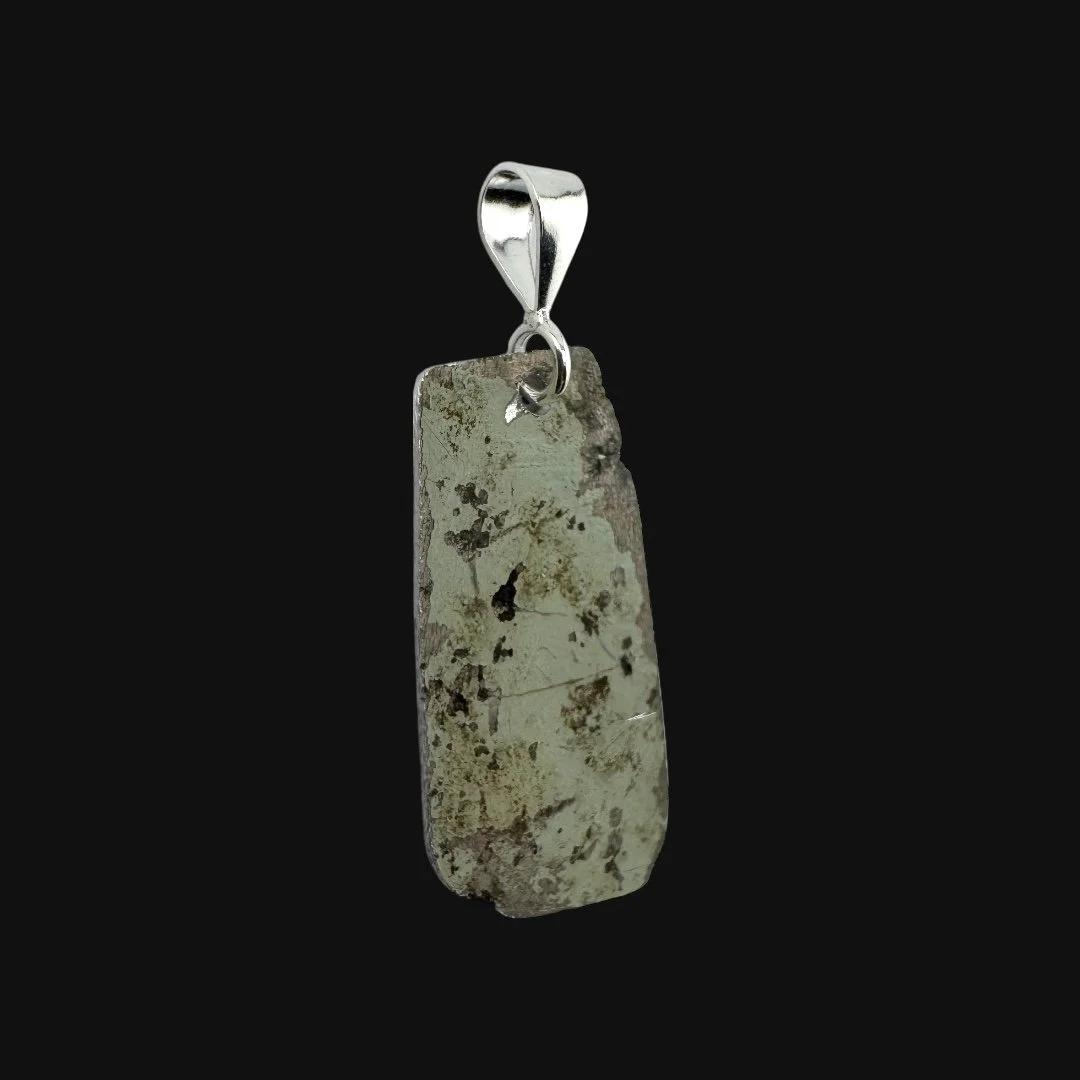 Image 4 of 17
Image 4 of 17

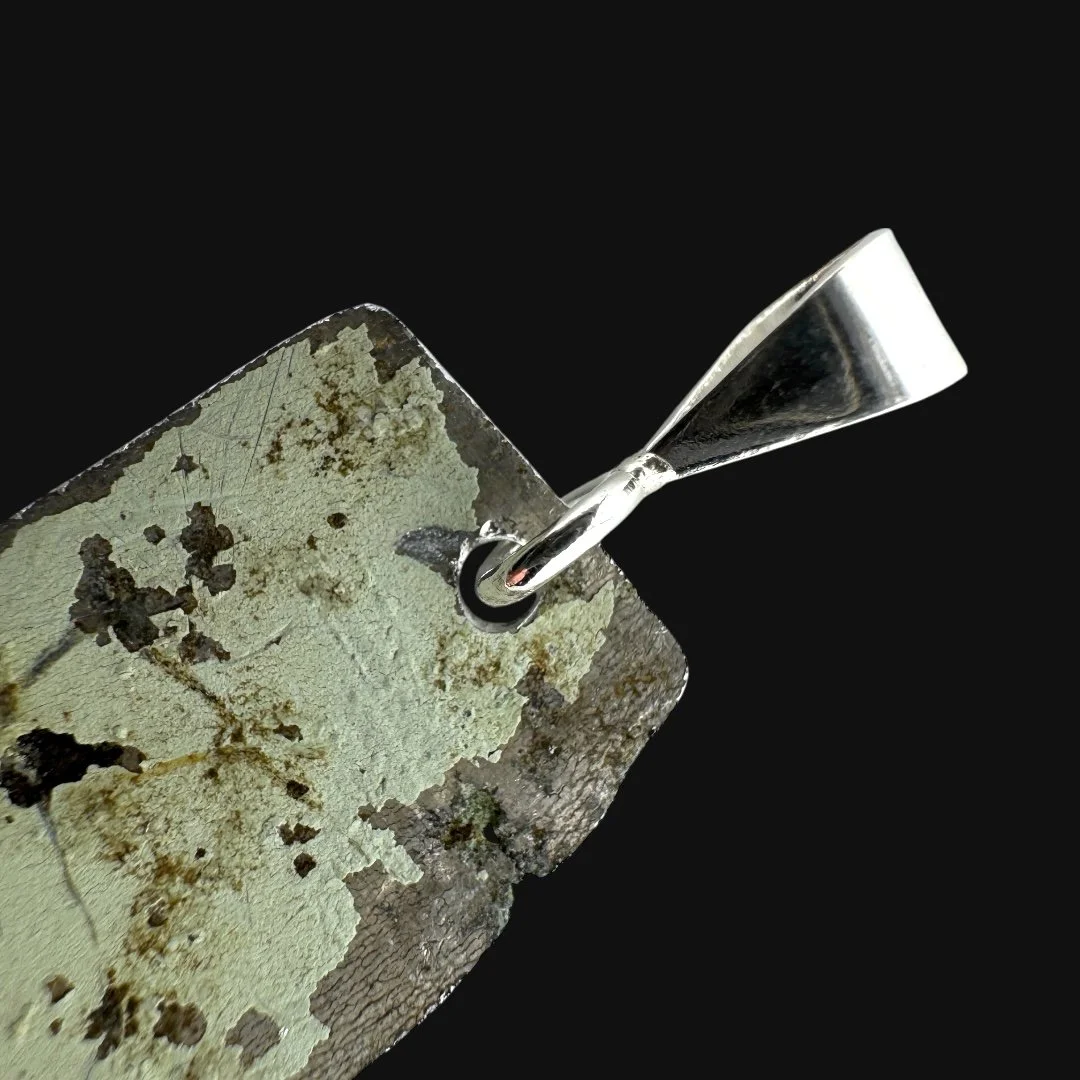 Image 5 of 17
Image 5 of 17

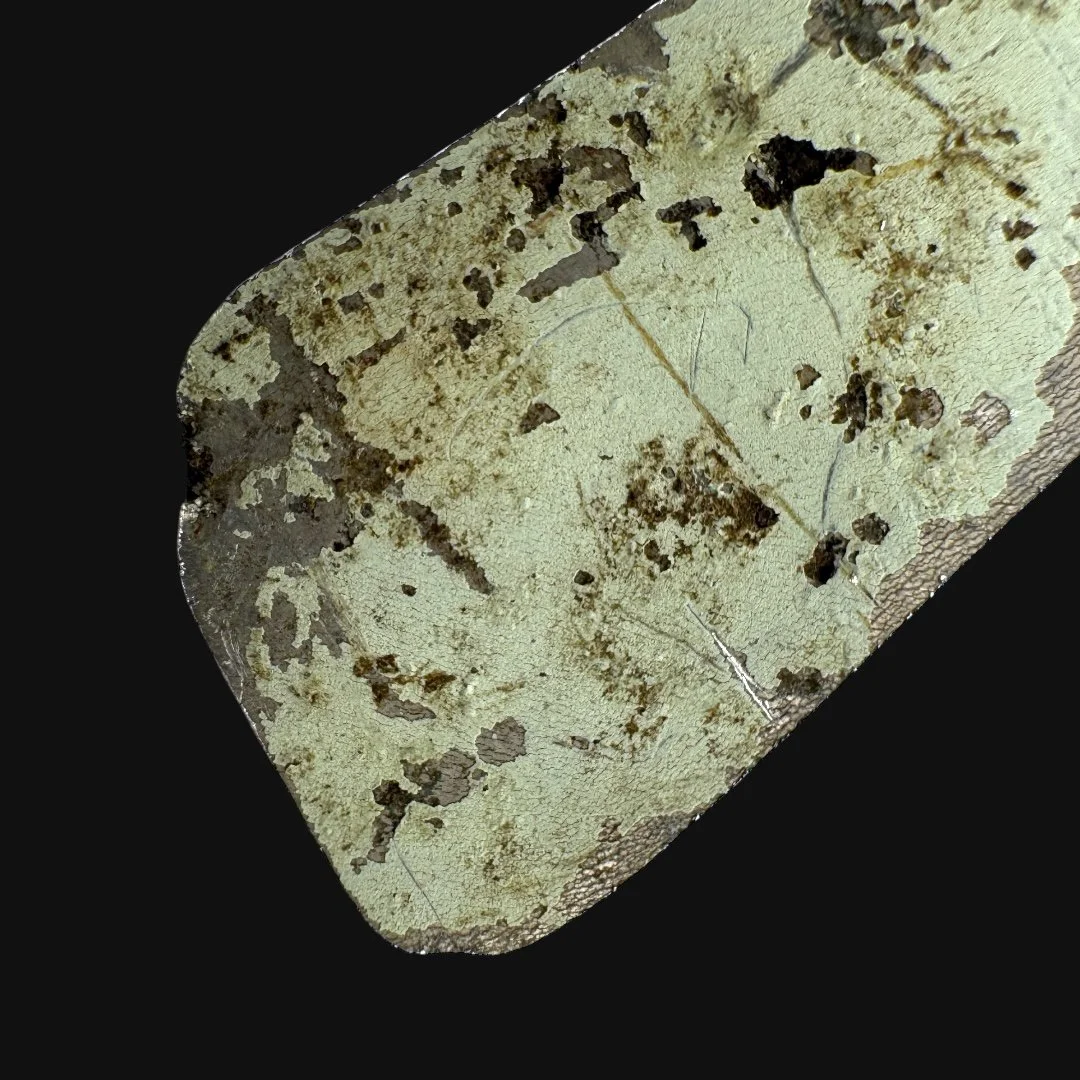 Image 6 of 17
Image 6 of 17

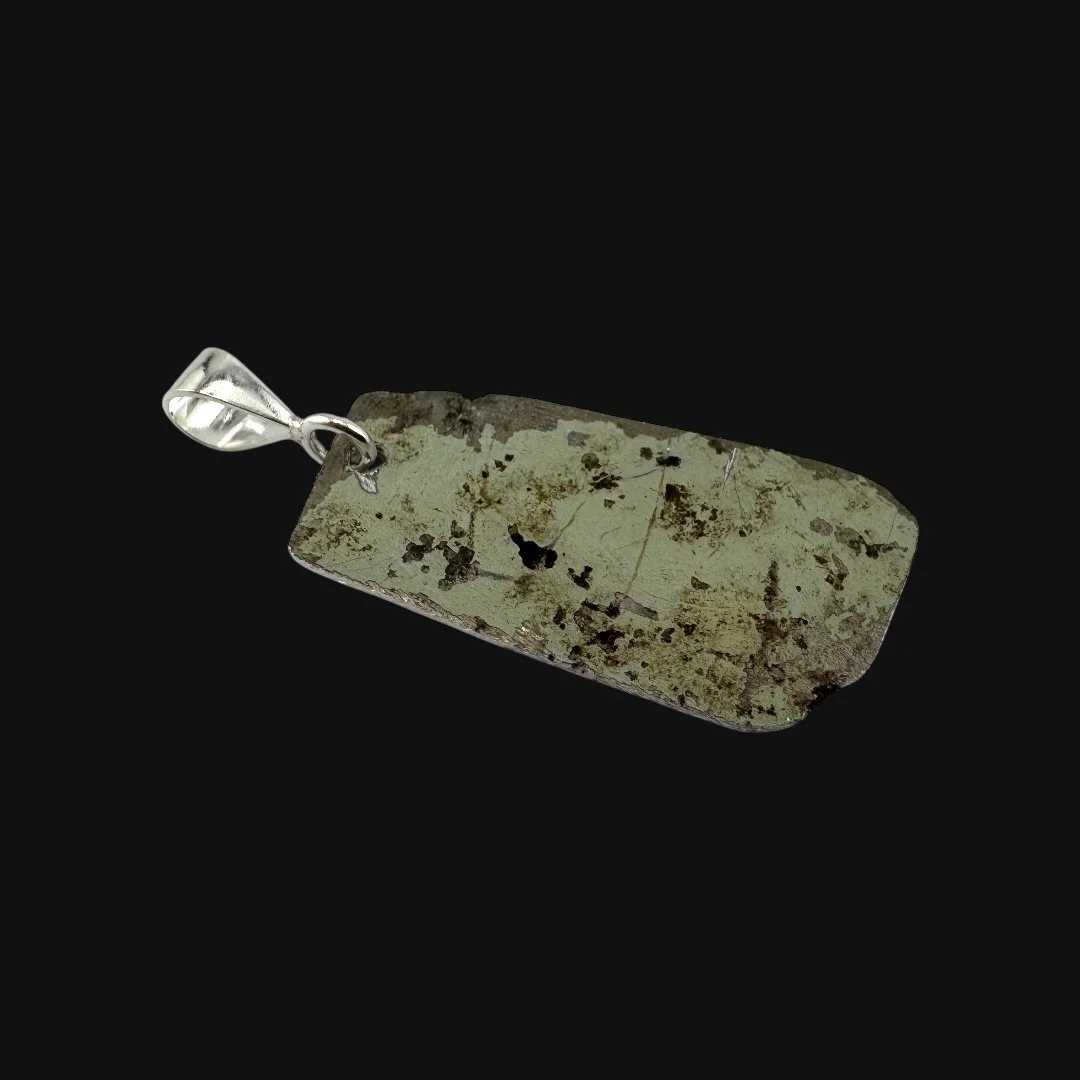 Image 7 of 17
Image 7 of 17

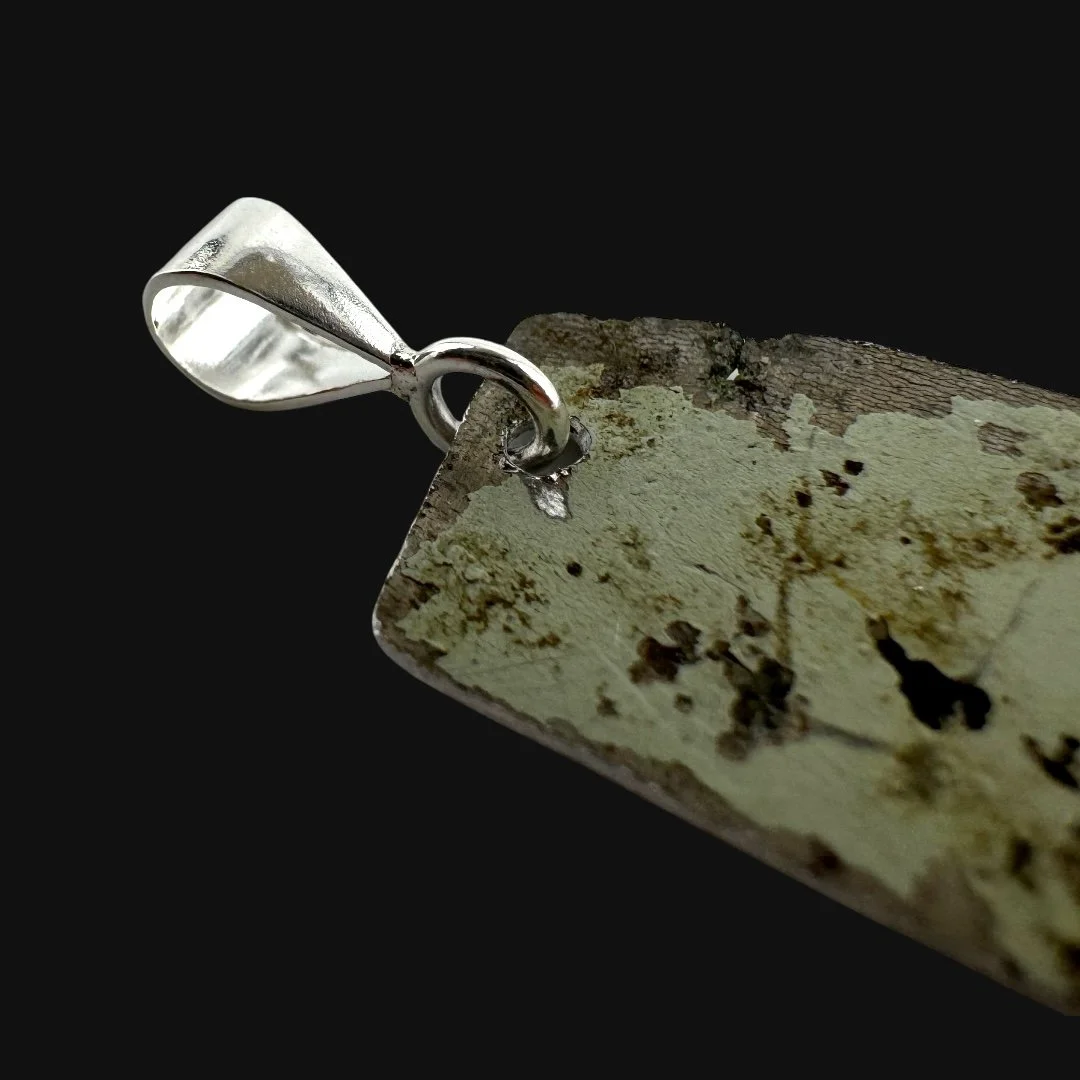 Image 8 of 17
Image 8 of 17

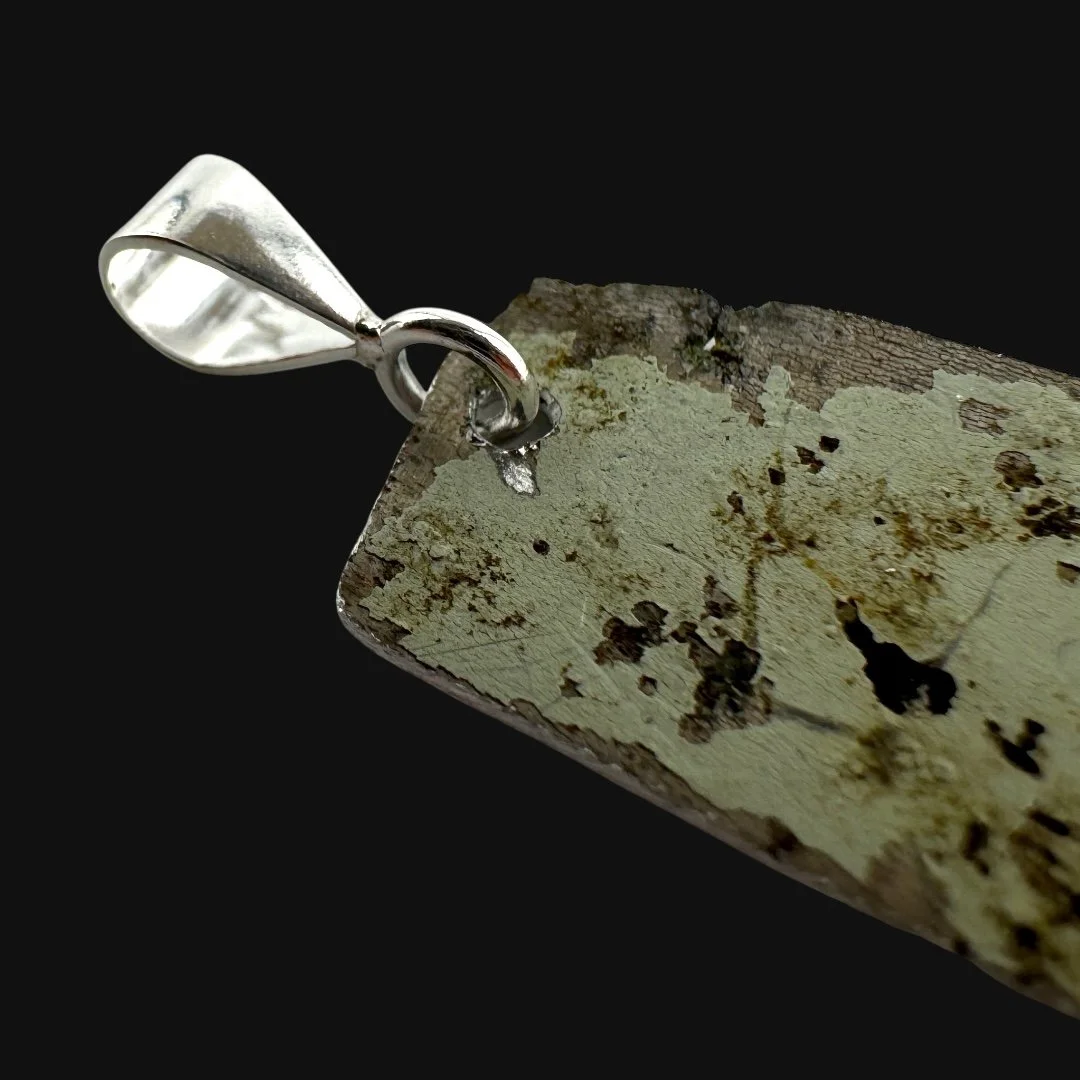 Image 9 of 17
Image 9 of 17

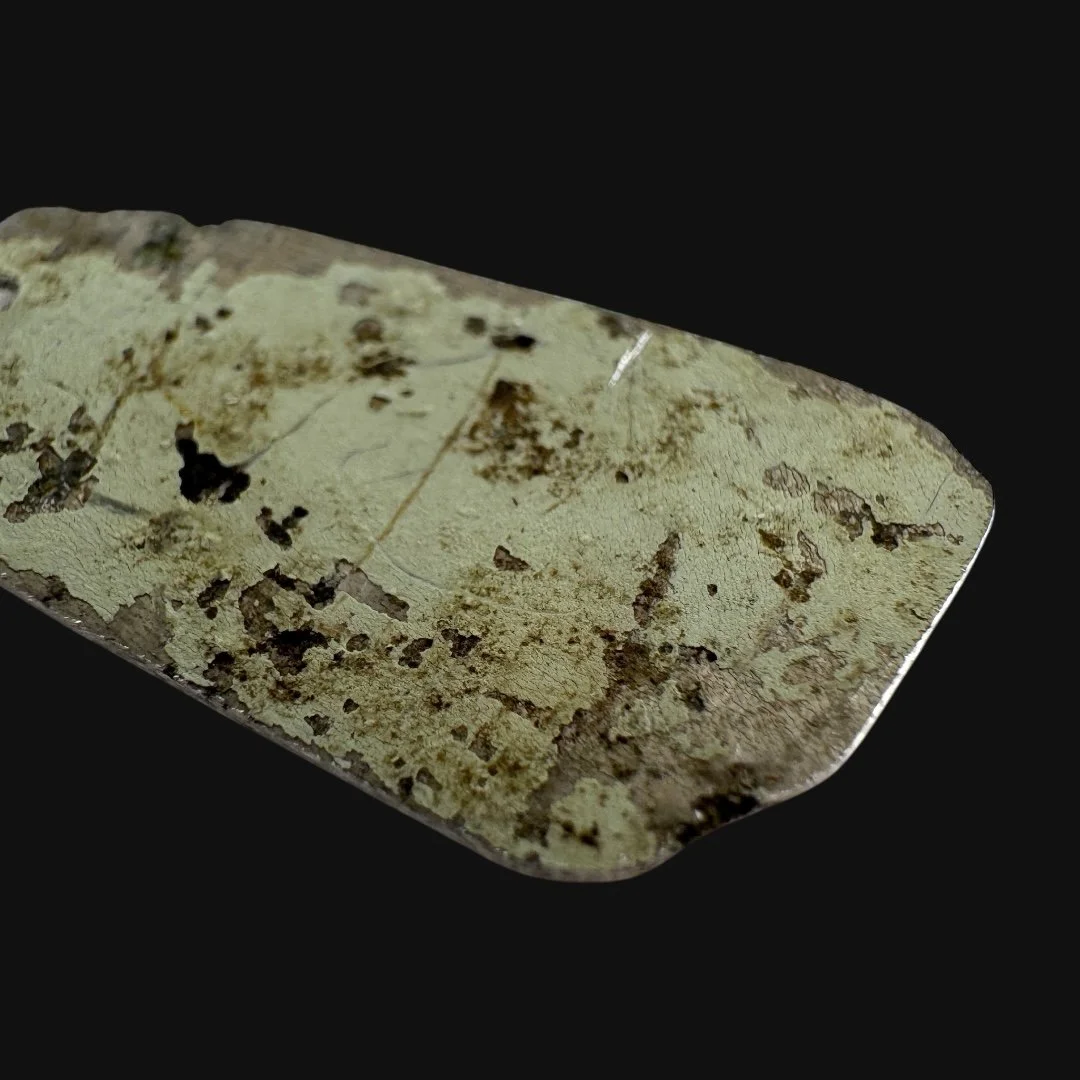 Image 10 of 17
Image 10 of 17

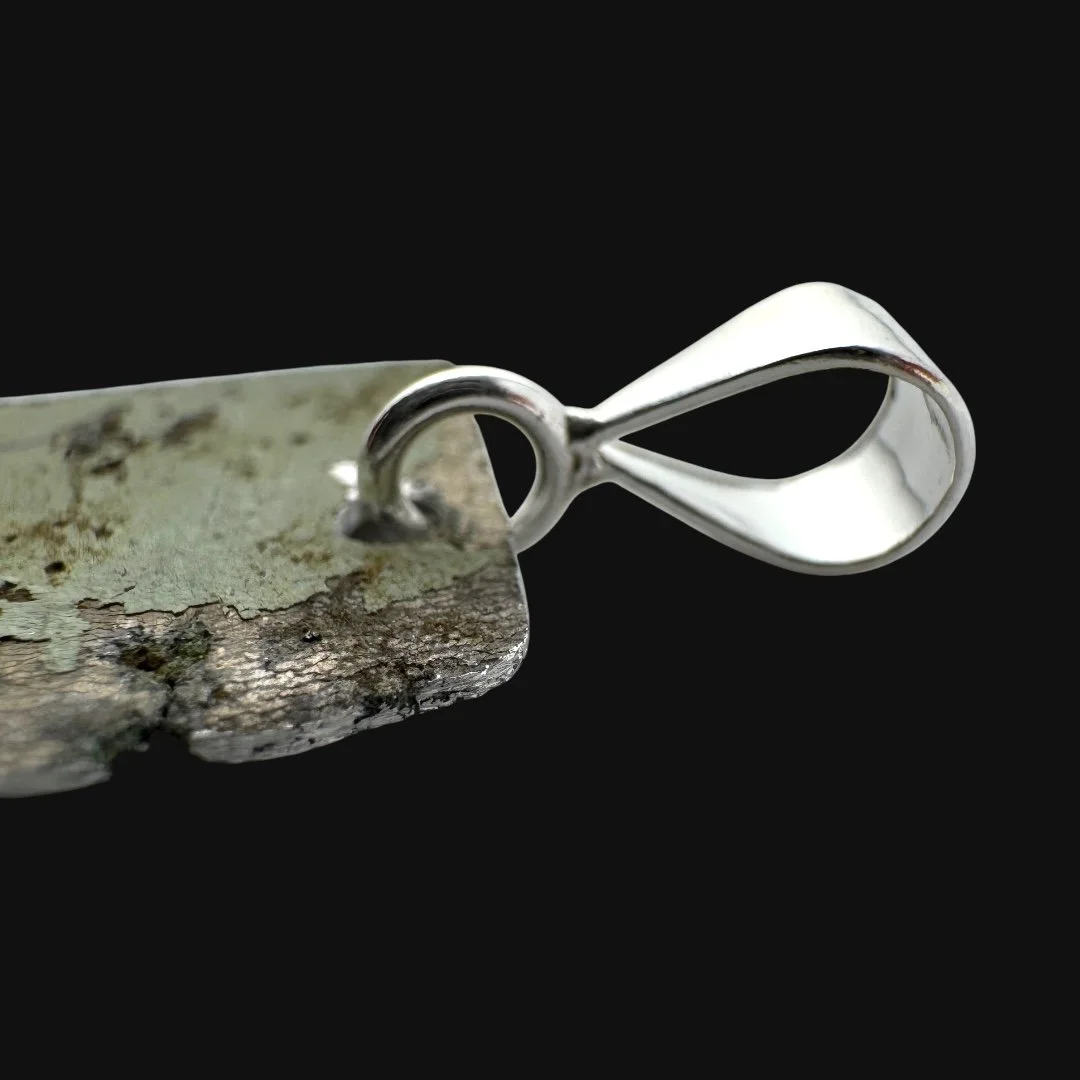 Image 11 of 17
Image 11 of 17

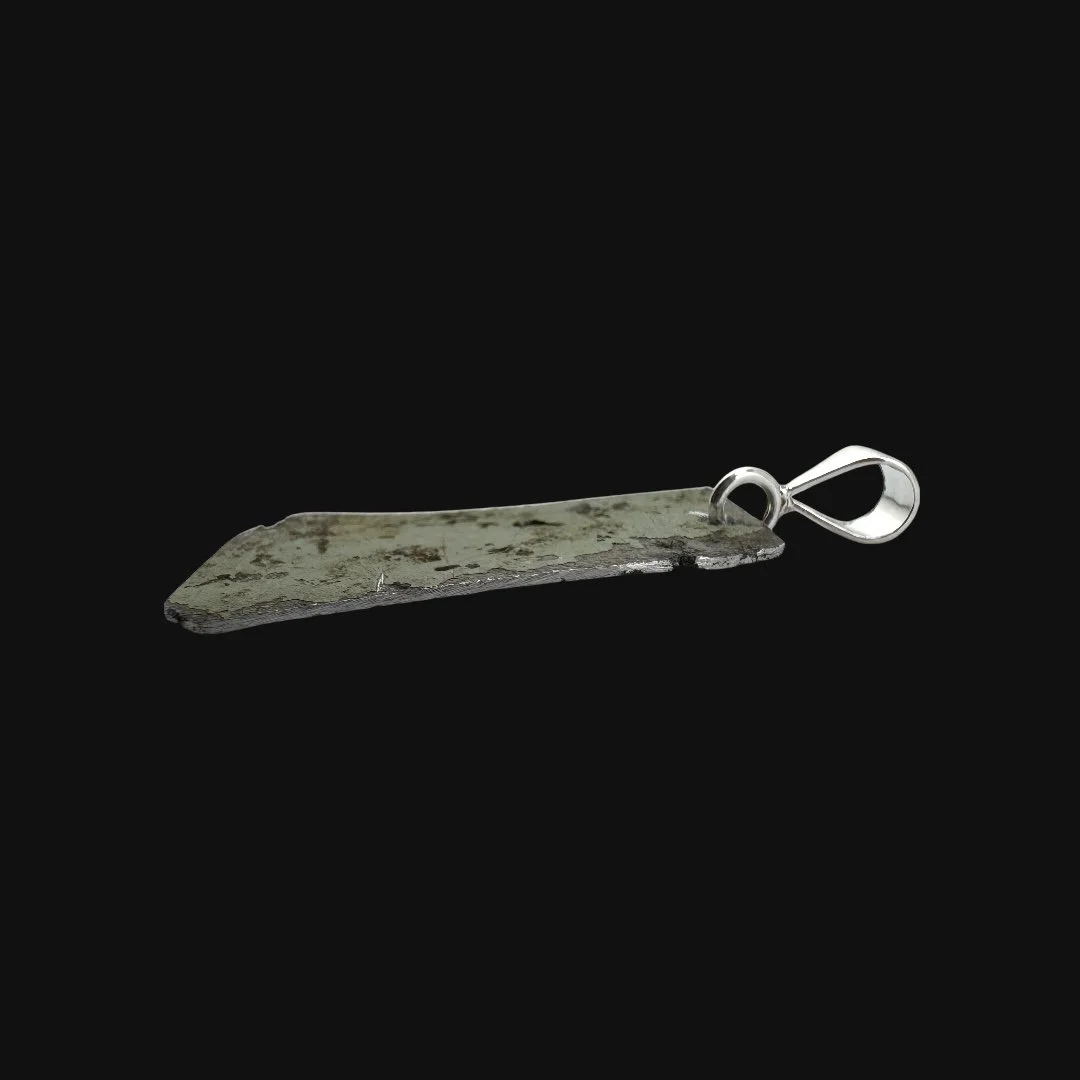 Image 12 of 17
Image 12 of 17

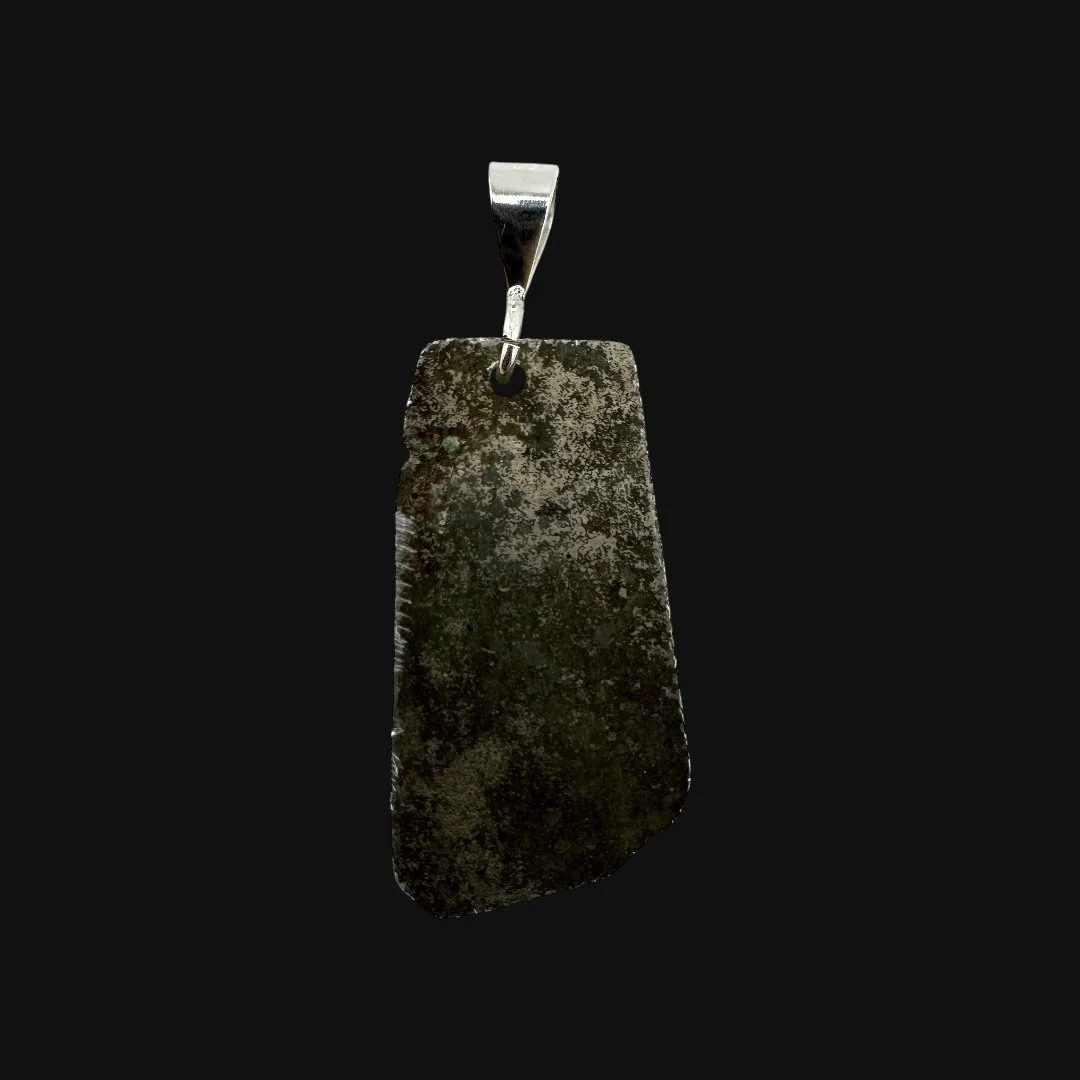 Image 13 of 17
Image 13 of 17

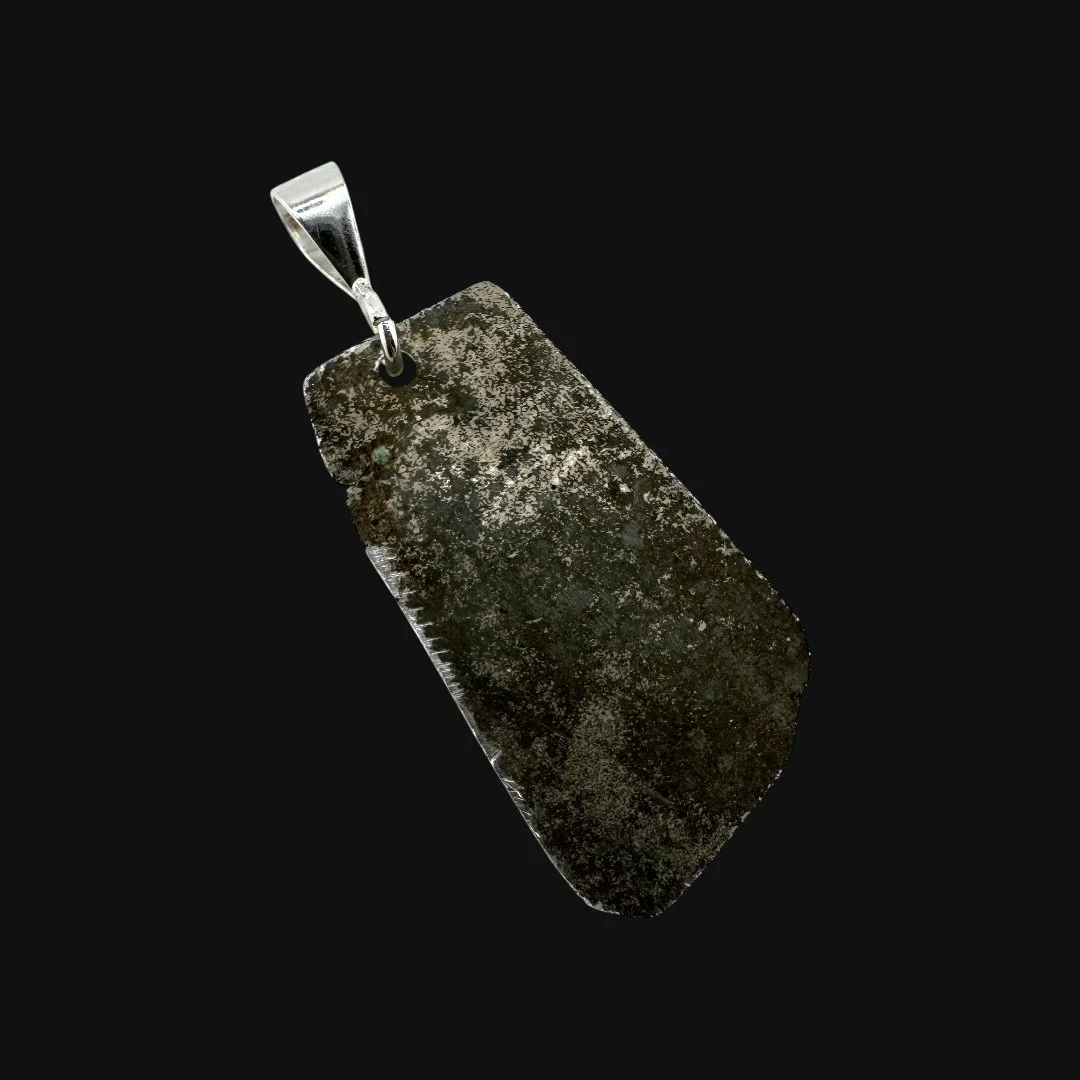 Image 14 of 17
Image 14 of 17

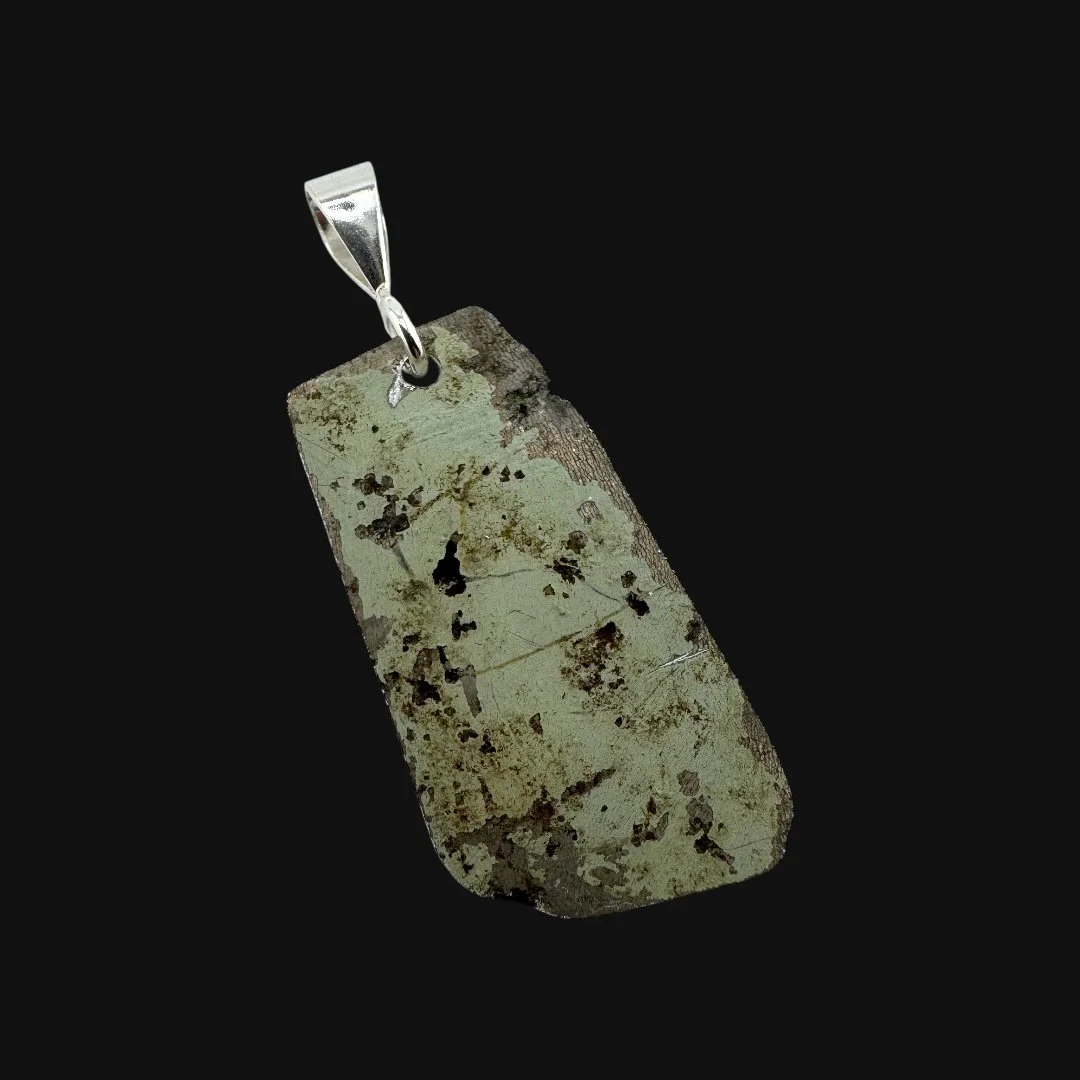 Image 15 of 17
Image 15 of 17

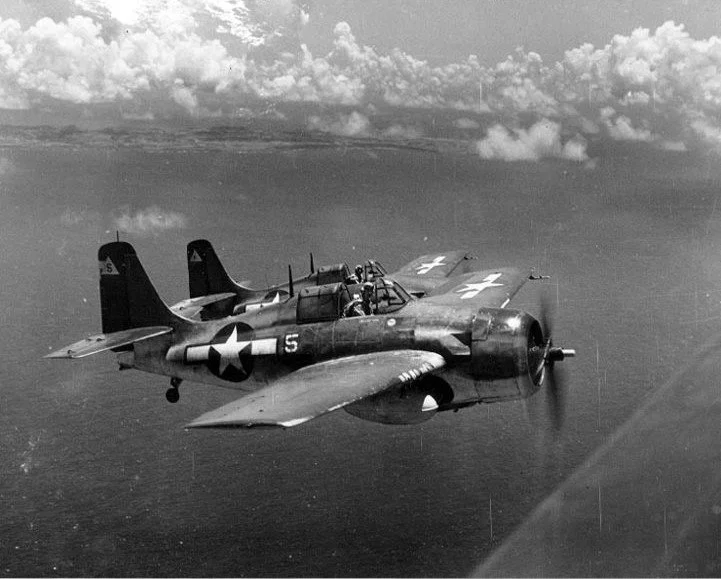 Image 16 of 17
Image 16 of 17

 Image 17 of 17
Image 17 of 17


















Original WWII 1942-1943 Battle of Guadalcanal U.S. Grumman F4F Wildcat "Combat Flown" Henderson Field Fighter Aircraft Metal Fragment Necklace Pendant (.925 Sterling Silver)
Comes with a hand-signed C.O.A. and a full historical research write-up
From: World War II
Dated: 1942-1943
Aircraft: Grumman F4F Wildcat
Type: Fighter Aircraft
Recovered: Henderson Field - Battle of Guadalcanal
National Origin: United States (American)
Necklace Pendant Size: Roughly 1 inch x ½ inch
Pendant Clap Material: .925 Sterling Silver
*EACH WORLD WAR II “COMBAT FLOWN” AIRCRAFT METAL PENDANT IS HANDMADE AND TRULY ONE-OF-A-KIND. THIS IS THE EXACT WWII AIRCRAFT NECKLACE PENDANT YOU WILL RECEIVE.
Wearable History Collection:
This World War II necklace aircraft pendant is more truly one-of-a-kind. It is a preserved piece of an original WWII aircraft, transformed into a wearable artifact that carries with it the stories of a generation. No two pendants are alike, which makes each one truly unique and irreplaceable. Rich with aviation history, this “combat flown” aircraft pendant offers its wearer the rare chance to carry a genuine fragment of World War II aviation heritage. Every mark in the metal, every detail, holds a connection to the past and serves as a tangible reminder of courage, sacrifice, and resilience. As part of our exclusive Wearable History Collection, it is not only a timeless accessory but also a powerful conversation starter. Flown in the heat of combat during World War II and preserved across generations, this WWII aircraft pendant is a relic unlike any other. Featured in our Wearable History Collection, it represents a rare chance to wear a true fragment of the past.
Courage in the Skies: The Grumman F4F Wildcat at Guadalcanal
The Grumman F4F Wildcat was the workhorse fighter of the United States Navy and Marine Corps during the early years of World War II. Compact, rugged, and dependable, the Wildcat faced overwhelming odds in the Pacific Theater, where it became synonymous with courage in the face of adversity. With folding wings and a powerful radial engine, it was designed to launch from aircraft carriers and endure punishing damage that might have destroyed more delicate planes.
Its defining chapter came in the struggle for Henderson Field on Guadalcanal. After U.S. Marines captured the unfinished Japanese airstrip in August 1942, Henderson became the lifeline of the island. Wildcats based there formed the core of the so-called “Cactus Air Force,” a patchwork group of Navy, Marine, and Army Air Force pilots who fought against constant Japanese assaults. Each mission was desperate. Outnumbered and often flying against the faster, more agile Mitsubishi A6M Zero, the Wildcat pilots relied on discipline, teamwork, and tactics to survive. The famous “Thach Weave,” a defensive maneuver developed by Commander John Thach, allowed Wildcats to cover one another and offset the Zero’s superior maneuverability.
Day after day, Wildcats scrambled from Henderson to meet incoming raids of Japanese bombers and their Zero escorts. The runways were cratered by artillery, fuel and parts were scarce, and pilots flew until exhaustion blurred the line between survival and sacrifice. Yet the Wildcat endured. Its tough frame absorbed punishment, its guns struck hard when aimed with precision, and its pilots earned a reputation for dogged resilience.
At Guadalcanal, the Wildcat was more than just an aircraft. It was a symbol of American determination to hold the line. The defense of Henderson Field prevented Japanese reinforcements from retaking the island, marking the first major Allied offensive victory in the Pacific. Without the Wildcat and its pilots, the tenuous foothold at Guadalcanal might have been lost, altering the entire trajectory of the Pacific War.
In hindsight, the F4F Wildcat represented the transition between old and new eras of air combat. Though soon replaced by the faster F6F Hellcat, the Wildcat’s role at Guadalcanal proved that toughness, tactical innovation, and sheer will could stand against seemingly insurmountable odds. Its legacy lives on not in speed or elegance, but in the story of a fighter and its pilots who refused to yield when the fate of the Pacific hung in the balance.
The Wildcat in the Pacific War:
Early Pacific Battles (1941–1942)
Pearl Harbor and Wake Island (1941) – Wildcats scrambled during the opening attacks of the Pacific War. At Wake, Marine pilots flying the outnumbered fighters managed to down Japanese aircraft and resist repeated assaults before the island fell.
Battle of the Coral Sea (1942) – Wildcats flew escort and defense for American carriers, helping blunt the first Japanese attempt to expand southward, marking the first carrier-versus-carrier battle in history.
Turning the Tide at Midway (1942)
Battle of Midway (June 1942) – Wildcats formed the defensive shield for U.S. carriers as dive bombers struck the Japanese fleet. Though often outmatched by the faster Mitsubishi Zero, Wildcat pilots fought doggedly to protect torpedo and dive bombers, contributing to the decisive American victory that crippled Japan’s carrier force.
The Crucible of Guadalcanal (1942–1943)
Henderson Field (August 1942 – February 1943) – Captured by U.S. Marines, the airstrip became the heart of the struggle for Guadalcanal. Wildcats of the “Cactus Air Force” flew daily from Henderson, intercepting Japanese bombers and dogfighting Zero escorts. The Thach Weave, a coordinated defensive tactic, allowed Wildcats to survive and score victories despite their slower speed.
Naval Battles around Guadalcanal – Wildcats provided air cover during ferocious sea battles in Ironbottom Sound, protecting American convoys that supplied the embattled Marines ashore.
Expanding the Offensive (1943–1944)
Solomon Islands Campaign – Wildcats continued to escort bombers, support amphibious landings, and provide critical air defense until gradually phased out by the newer F6F Hellcat.
Gilbert and Marshall Islands – Wildcats saw service in secondary roles, often from escort carriers, where their toughness and short takeoff ability were well suited to smaller decks.
Final Roles in the War (1944–1945)
Escort Carrier Operations – As newer fighters took the front lines, Wildcats remained in service aboard escort carriers, providing air cover for convoys, anti-submarine patrols, and close air support during invasions.
Battle of Leyte Gulf (1944) – Wildcats flying from escort carriers played a role in protecting U.S. naval forces during one of the largest naval battles in history.
The Legacy Within This WWII Necklace Pendant:
This handcrafted World War II necklace pendant has been created from the very metal of a Grumman F4F Wildcat fighter, once flown in combat during the ferocious battles for control of the Pacific. The Wildcat was the first great American naval fighter of the war, a rugged and resilient aircraft that helped secure victory against impossible odds. At Henderson Field on Guadalcanal, these fighters of the “Cactus Air Force” rose daily into the skies, intercepting Japanese bombers and dueling Zero escorts in desperate fights that decided the fate of the island.
Every detail in the metal carries memory. It echoes the roar of engines straining over shattered runways. It recalls the rattle of machine guns in dogfights above Guadalcanal and the exhaustion of young pilots who flew mission after mission to keep Henderson in American hands. Transformed into a pendant, the fragment ceases to be only the relic of a machine. It becomes a symbol of resilience, courage, and the turning point of the Pacific War.
Each pendant is entirely unique, marked by its own path through history. To wear it is to carry not just jewelry, but a piece of the struggle that shifted momentum in the Pacific. It invites conversation, sparks reflection, and connects the present with the legacy of those who refused to yield. This pendant is more than an accessory. It is a living fragment of history. A remembrance of sacrifice. And a reminder of the courage that defined one of World War II’s most pivotal campaigns.
Comes with a hand-signed C.O.A. and a full historical research write-up
From: World War II
Dated: 1942-1943
Aircraft: Grumman F4F Wildcat
Type: Fighter Aircraft
Recovered: Henderson Field - Battle of Guadalcanal
National Origin: United States (American)
Necklace Pendant Size: Roughly 1 inch x ½ inch
Pendant Clap Material: .925 Sterling Silver
*EACH WORLD WAR II “COMBAT FLOWN” AIRCRAFT METAL PENDANT IS HANDMADE AND TRULY ONE-OF-A-KIND. THIS IS THE EXACT WWII AIRCRAFT NECKLACE PENDANT YOU WILL RECEIVE.
Wearable History Collection:
This World War II necklace aircraft pendant is more truly one-of-a-kind. It is a preserved piece of an original WWII aircraft, transformed into a wearable artifact that carries with it the stories of a generation. No two pendants are alike, which makes each one truly unique and irreplaceable. Rich with aviation history, this “combat flown” aircraft pendant offers its wearer the rare chance to carry a genuine fragment of World War II aviation heritage. Every mark in the metal, every detail, holds a connection to the past and serves as a tangible reminder of courage, sacrifice, and resilience. As part of our exclusive Wearable History Collection, it is not only a timeless accessory but also a powerful conversation starter. Flown in the heat of combat during World War II and preserved across generations, this WWII aircraft pendant is a relic unlike any other. Featured in our Wearable History Collection, it represents a rare chance to wear a true fragment of the past.
Courage in the Skies: The Grumman F4F Wildcat at Guadalcanal
The Grumman F4F Wildcat was the workhorse fighter of the United States Navy and Marine Corps during the early years of World War II. Compact, rugged, and dependable, the Wildcat faced overwhelming odds in the Pacific Theater, where it became synonymous with courage in the face of adversity. With folding wings and a powerful radial engine, it was designed to launch from aircraft carriers and endure punishing damage that might have destroyed more delicate planes.
Its defining chapter came in the struggle for Henderson Field on Guadalcanal. After U.S. Marines captured the unfinished Japanese airstrip in August 1942, Henderson became the lifeline of the island. Wildcats based there formed the core of the so-called “Cactus Air Force,” a patchwork group of Navy, Marine, and Army Air Force pilots who fought against constant Japanese assaults. Each mission was desperate. Outnumbered and often flying against the faster, more agile Mitsubishi A6M Zero, the Wildcat pilots relied on discipline, teamwork, and tactics to survive. The famous “Thach Weave,” a defensive maneuver developed by Commander John Thach, allowed Wildcats to cover one another and offset the Zero’s superior maneuverability.
Day after day, Wildcats scrambled from Henderson to meet incoming raids of Japanese bombers and their Zero escorts. The runways were cratered by artillery, fuel and parts were scarce, and pilots flew until exhaustion blurred the line between survival and sacrifice. Yet the Wildcat endured. Its tough frame absorbed punishment, its guns struck hard when aimed with precision, and its pilots earned a reputation for dogged resilience.
At Guadalcanal, the Wildcat was more than just an aircraft. It was a symbol of American determination to hold the line. The defense of Henderson Field prevented Japanese reinforcements from retaking the island, marking the first major Allied offensive victory in the Pacific. Without the Wildcat and its pilots, the tenuous foothold at Guadalcanal might have been lost, altering the entire trajectory of the Pacific War.
In hindsight, the F4F Wildcat represented the transition between old and new eras of air combat. Though soon replaced by the faster F6F Hellcat, the Wildcat’s role at Guadalcanal proved that toughness, tactical innovation, and sheer will could stand against seemingly insurmountable odds. Its legacy lives on not in speed or elegance, but in the story of a fighter and its pilots who refused to yield when the fate of the Pacific hung in the balance.
The Wildcat in the Pacific War:
Early Pacific Battles (1941–1942)
Pearl Harbor and Wake Island (1941) – Wildcats scrambled during the opening attacks of the Pacific War. At Wake, Marine pilots flying the outnumbered fighters managed to down Japanese aircraft and resist repeated assaults before the island fell.
Battle of the Coral Sea (1942) – Wildcats flew escort and defense for American carriers, helping blunt the first Japanese attempt to expand southward, marking the first carrier-versus-carrier battle in history.
Turning the Tide at Midway (1942)
Battle of Midway (June 1942) – Wildcats formed the defensive shield for U.S. carriers as dive bombers struck the Japanese fleet. Though often outmatched by the faster Mitsubishi Zero, Wildcat pilots fought doggedly to protect torpedo and dive bombers, contributing to the decisive American victory that crippled Japan’s carrier force.
The Crucible of Guadalcanal (1942–1943)
Henderson Field (August 1942 – February 1943) – Captured by U.S. Marines, the airstrip became the heart of the struggle for Guadalcanal. Wildcats of the “Cactus Air Force” flew daily from Henderson, intercepting Japanese bombers and dogfighting Zero escorts. The Thach Weave, a coordinated defensive tactic, allowed Wildcats to survive and score victories despite their slower speed.
Naval Battles around Guadalcanal – Wildcats provided air cover during ferocious sea battles in Ironbottom Sound, protecting American convoys that supplied the embattled Marines ashore.
Expanding the Offensive (1943–1944)
Solomon Islands Campaign – Wildcats continued to escort bombers, support amphibious landings, and provide critical air defense until gradually phased out by the newer F6F Hellcat.
Gilbert and Marshall Islands – Wildcats saw service in secondary roles, often from escort carriers, where their toughness and short takeoff ability were well suited to smaller decks.
Final Roles in the War (1944–1945)
Escort Carrier Operations – As newer fighters took the front lines, Wildcats remained in service aboard escort carriers, providing air cover for convoys, anti-submarine patrols, and close air support during invasions.
Battle of Leyte Gulf (1944) – Wildcats flying from escort carriers played a role in protecting U.S. naval forces during one of the largest naval battles in history.
The Legacy Within This WWII Necklace Pendant:
This handcrafted World War II necklace pendant has been created from the very metal of a Grumman F4F Wildcat fighter, once flown in combat during the ferocious battles for control of the Pacific. The Wildcat was the first great American naval fighter of the war, a rugged and resilient aircraft that helped secure victory against impossible odds. At Henderson Field on Guadalcanal, these fighters of the “Cactus Air Force” rose daily into the skies, intercepting Japanese bombers and dueling Zero escorts in desperate fights that decided the fate of the island.
Every detail in the metal carries memory. It echoes the roar of engines straining over shattered runways. It recalls the rattle of machine guns in dogfights above Guadalcanal and the exhaustion of young pilots who flew mission after mission to keep Henderson in American hands. Transformed into a pendant, the fragment ceases to be only the relic of a machine. It becomes a symbol of resilience, courage, and the turning point of the Pacific War.
Each pendant is entirely unique, marked by its own path through history. To wear it is to carry not just jewelry, but a piece of the struggle that shifted momentum in the Pacific. It invites conversation, sparks reflection, and connects the present with the legacy of those who refused to yield. This pendant is more than an accessory. It is a living fragment of history. A remembrance of sacrifice. And a reminder of the courage that defined one of World War II’s most pivotal campaigns.
